In a disposable society like ours, everything from the smallest item to ocean-going ships, to power stations to whole neighbourhoods are routinely abandoned or destroyed. I’m fascinated by what people leave behind: items of clothing, food, books, buildings, furniture, shoes, abandoned equipment, cars — you name it. The list is endless.
What always struck me, though, was not the object itself, but what was it doing there? The motivation and the context, if you want to play detective. I wonder who left all this behind, but also why. Did they forget? Was it deliberate? Were they just lazy? Was it stolen? Might it simply have been abandoned as not being needed? You tell me.
I found this pair of plastic utensils on the Wells St. Bridge in Chicago. They were crossed as if the user had just finished eating. Yet, there was no sign of food. A wide open TL 60mm did an impressive job of making them slightly more attractive than they deserved.
This abandonment of plastic utensils, plates, napkins, and so forth is a scourge that frustrates. Chicago now has a default setting, which is that by law the restaurant won’t give you any of this stuff unless you specifically ask for it.
These were a pair of abandoned sunglasses of the type bike messengers wear. They were broken and had just been tossed aside. I liked the reflection and thought it made for an interesting shot. But I have no idea why they were just thrown on the ground and not put into a bin, unless the biker had an accident.
Boats
The next items here are boats. They are almost haunting, particularly in some of the locations where they have been left. The first on the banks of a smallish river in Michigan. You can imagine someone almost saying to the canoe, “I’m sorry, this is the last trip — your journey ends here.”
Or the second, much bigger boat, capsized on the River Garry in Scotland. There the story is quite different. A violent storm caused it to capsize, and there was seemingly no economic value in rescuing the ship, even for scrap.
And the final image is of what looks like, to this observer, a fishing boat holed below the water line in marshland close to Loch Coruisk on the Isle of Skye. It appears to have been hauled up out of the water and left to rot. The bleakness, damp, and mist, make you wonder how the fisherman went fishing after that. There was no other boat in sight.
What happens later?
Abandonment can often create a sense of curiosity. What happens to these things over time if no one claims them or disposes of them? Do they decay and disappear without trace, or does some enterprising scrap merchant remove them and sell them?
Trucks and cars not passing me
This beautiful old car with patina to spare was left in a main street, just to the north of downtown Chicago. It felt like a scene from Tom Wait’s song “Ol’ 55”. The tow truck was left to rust in a tiny hamlet in northern Wisconsin, where distant relatives of mine had immigrated to from the fenlands of Lincolnshire in the 1870s.
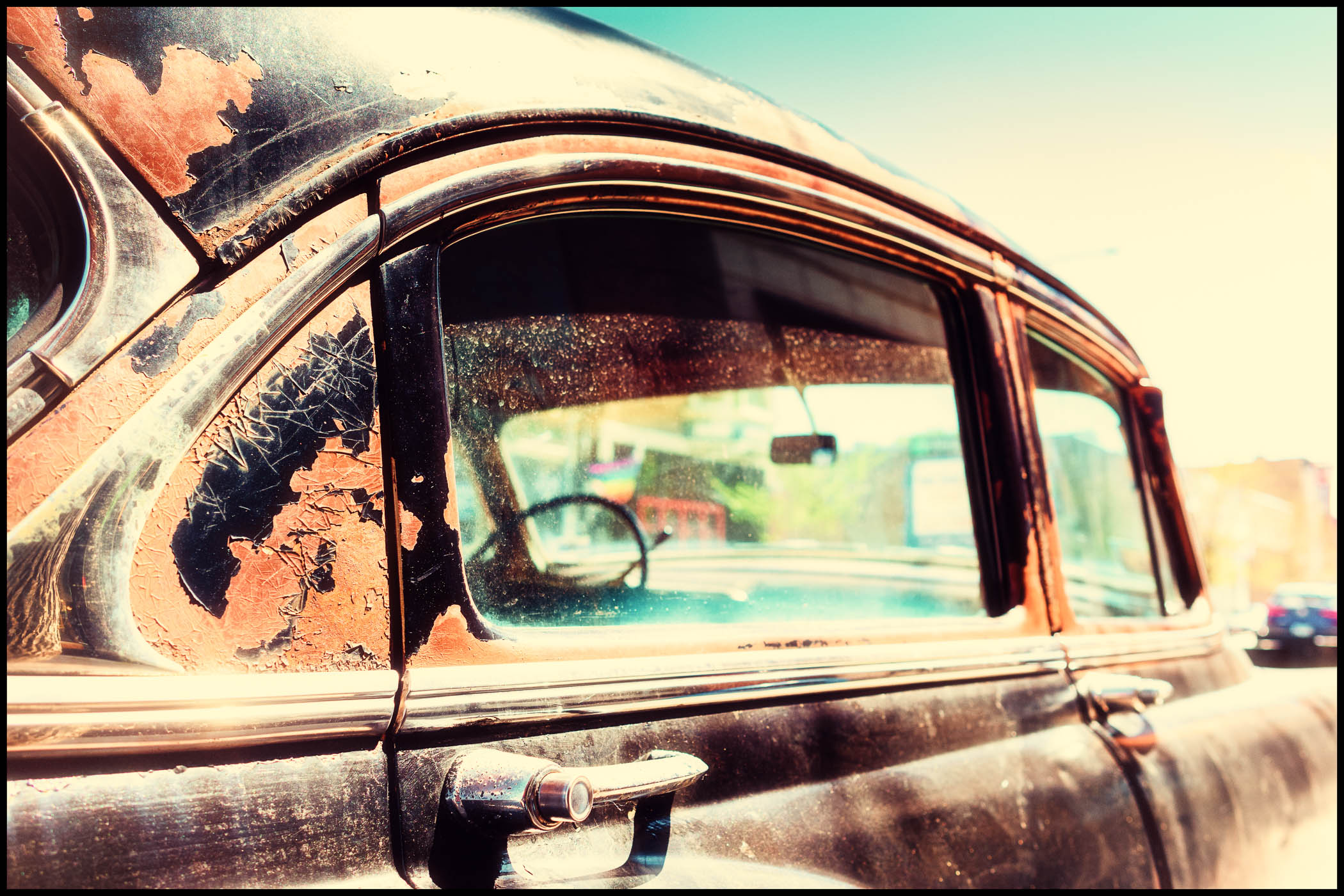
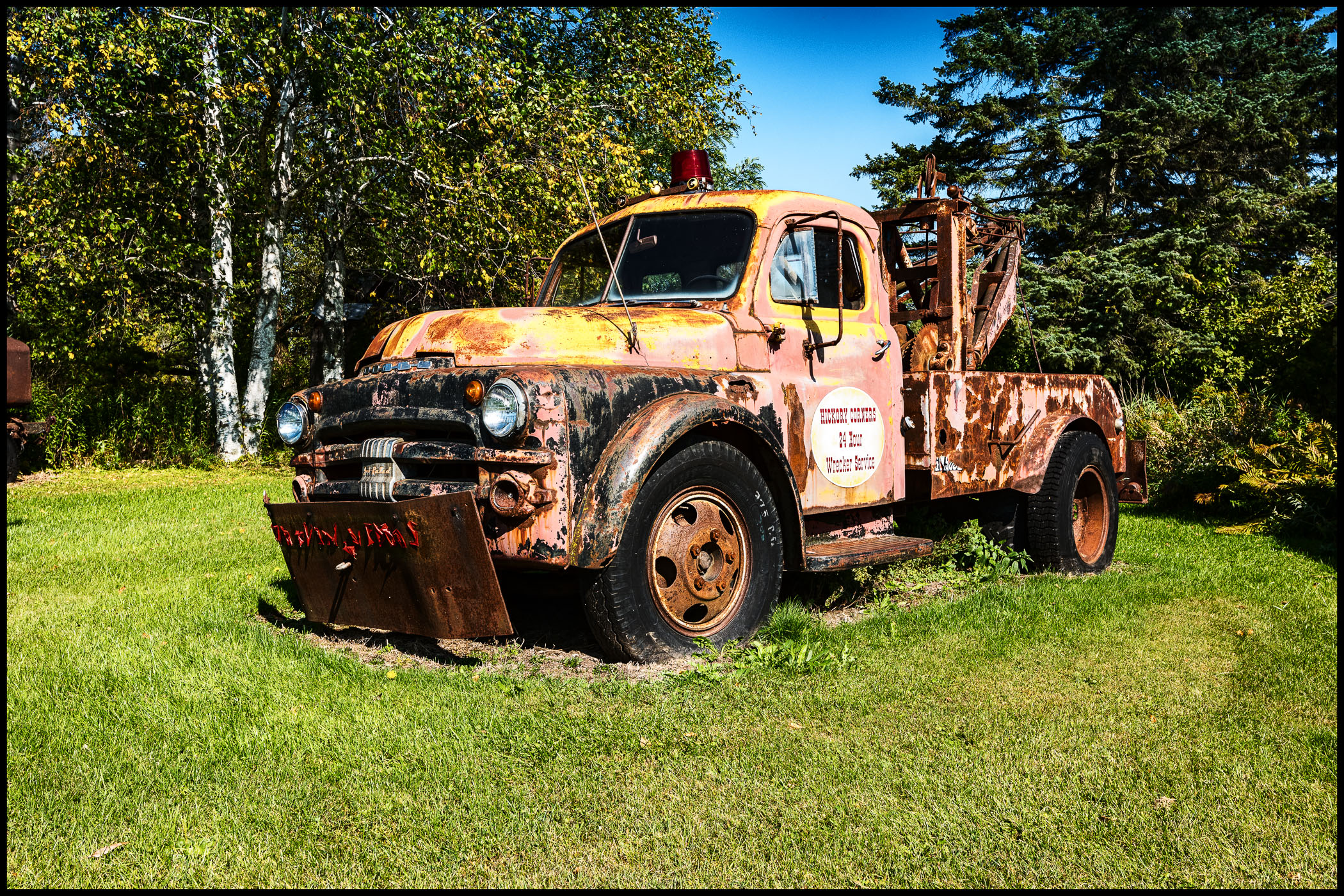
Useful things past their usefulness
The first rusty barrel is in Michigan, the second barrel and the wok are from a lakefront park in Chicago. The barrels were gone, either shot or just rusted through, but could have been turned into tubs for vegetables in a suburban garden. The wok simply needed a good clean. A really good clean!
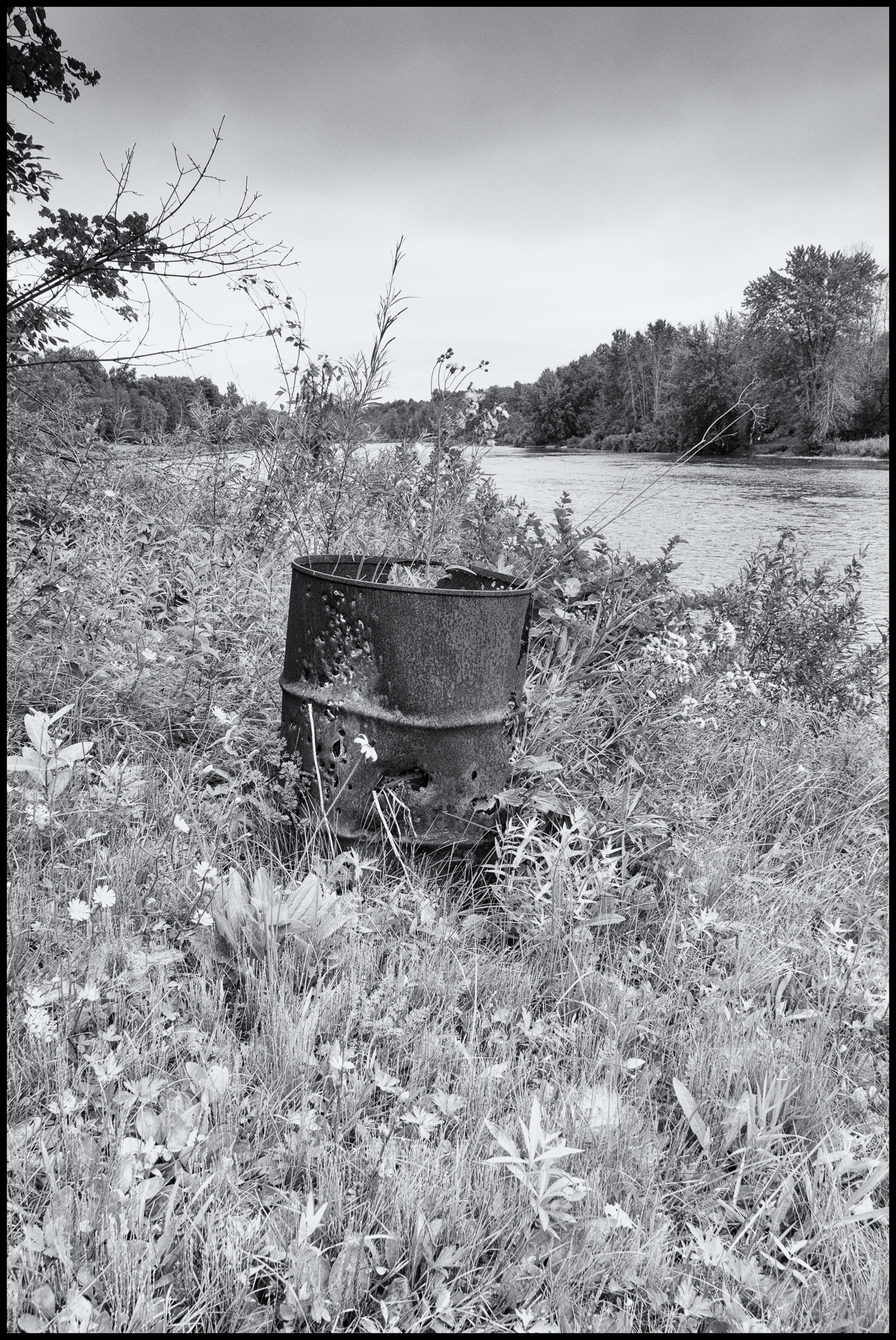
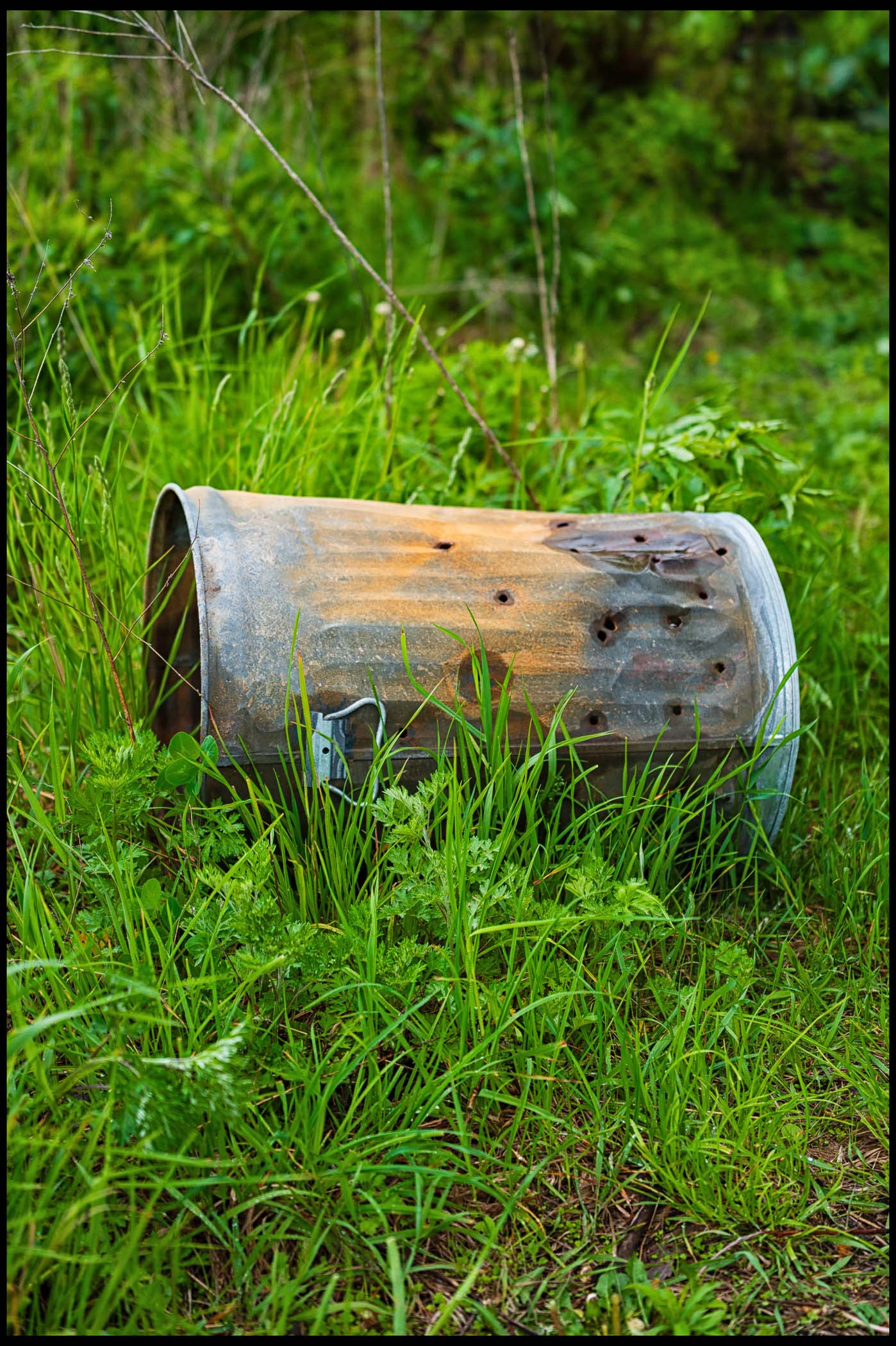
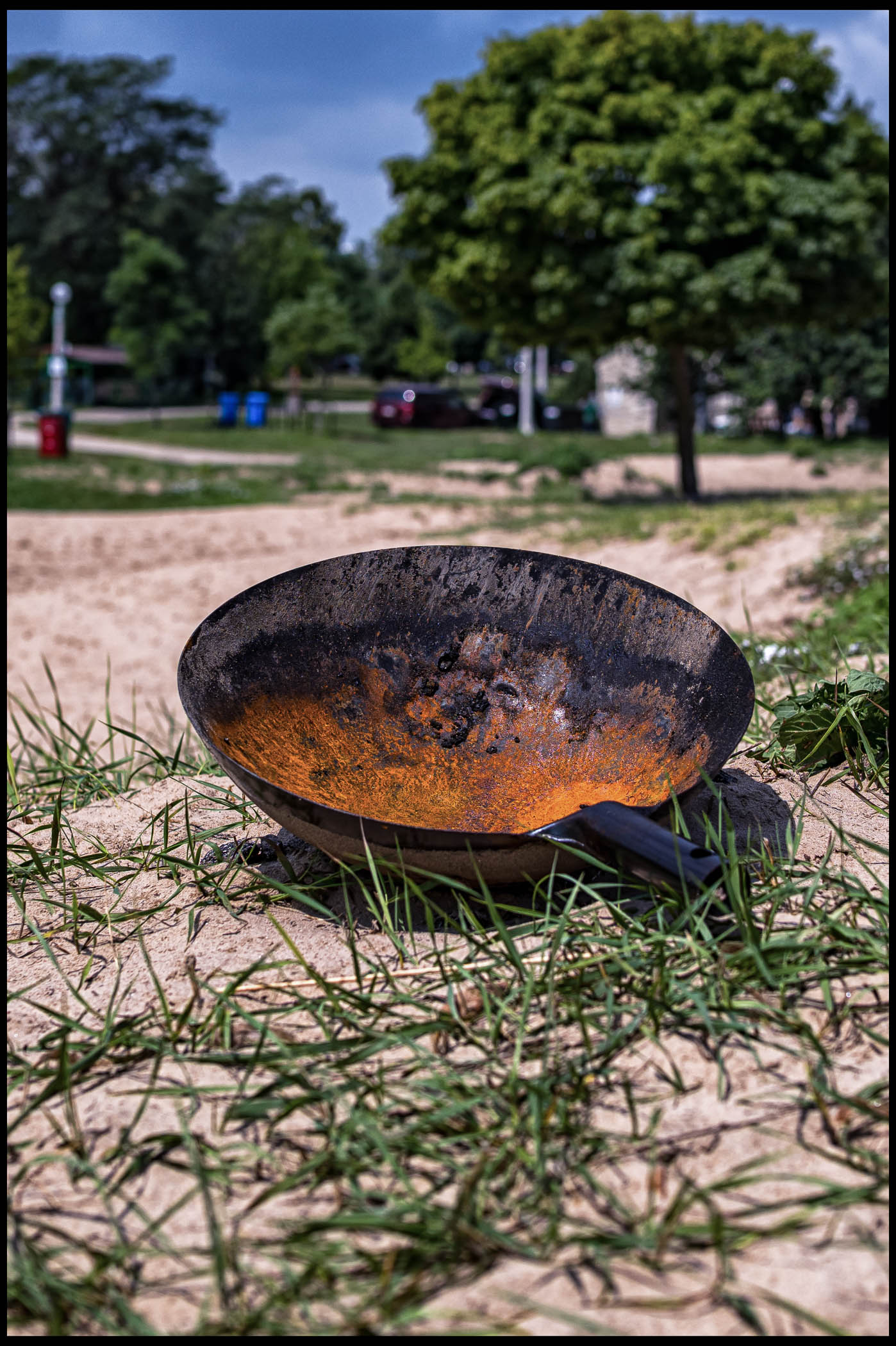
As an aside, if you’ve watched the TV series “The Detectorists” you can see how all of this can be turned into wry comedy for the unwary. Ringpulls anyone?
Wearing away
You can also take a serious and literary approach and read Thomas Hardy’s “During Wind and Rain.” The final line of the poem is “Down their carved names the raindrop ploughs.” We can almost see the slow weathering of the carved letters, as the raindrops trickle down, or at least imagine it.
This gravestone is part of a cemetery called “Graceland” not far from the Wrigley Field baseball ground. It holds many of Chicago’s great and good going back almost 200 years. Though it seems later generations have not bothered to care for some headstones. It’s a fantastic location for taking photographs, particularly early in the morning or at dusk, preferably in B&W.
A collection of lost soles
Take shoes, and I mean literally countless, shoes. Quite frequently it’s only one shoe that’s been abandoned: which begs the question, what happened to the other one, and did the wearer have to hop all the way home? And these are not always shoes or boots that look worn out. What’s going on here, Nancy Sinatra might have asked?
The trainers were left outside a Starbucks in my neighbourhood. You might imagine the owner took them off and then walked in to order a skimmed-milk soy latte before walking home barefoot as punishment for not ordering a double espresso. Maybe that person should have acquired the next item, the fleece-lined shoe, and at least had warmth for one foot on the way home.
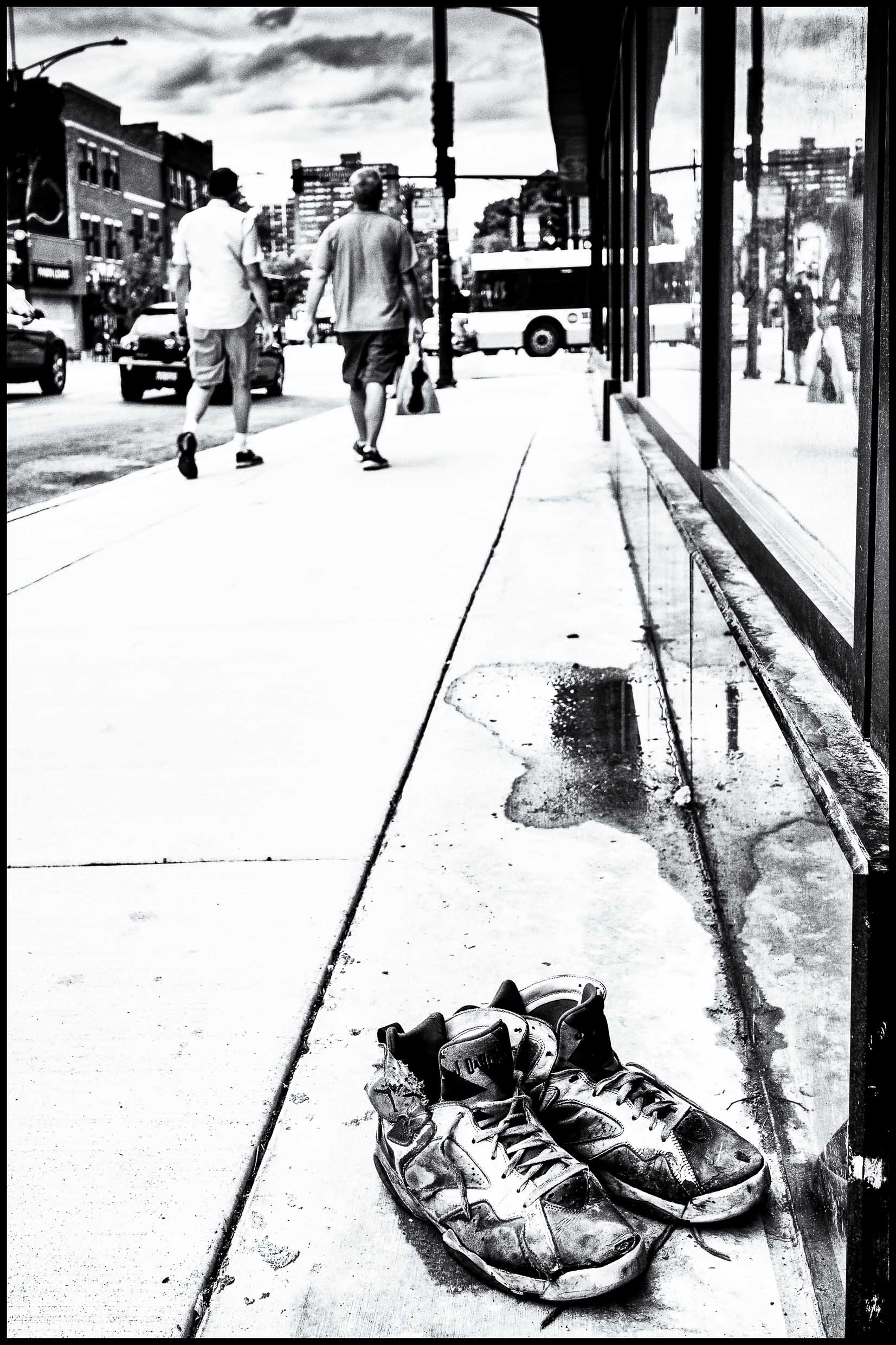
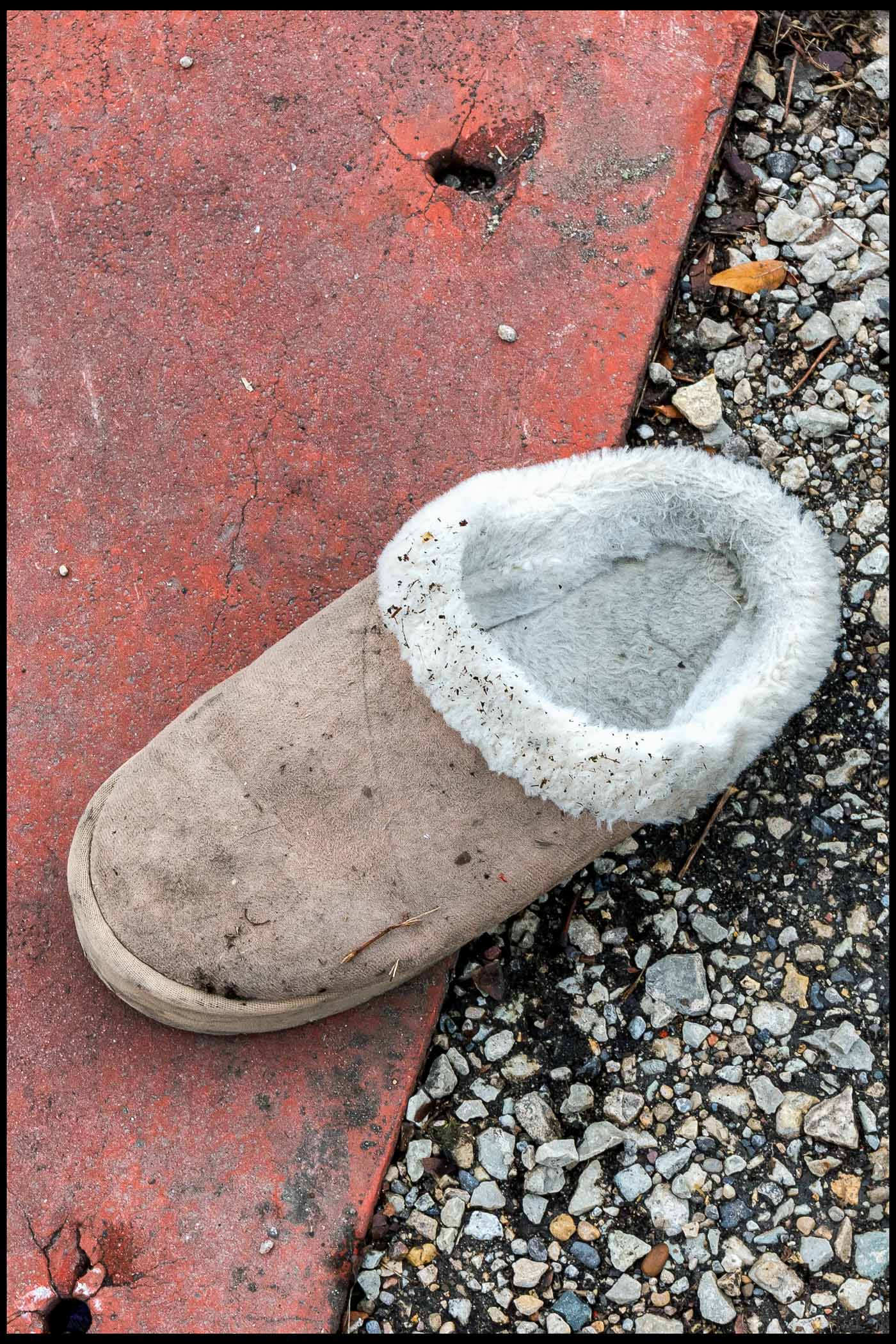
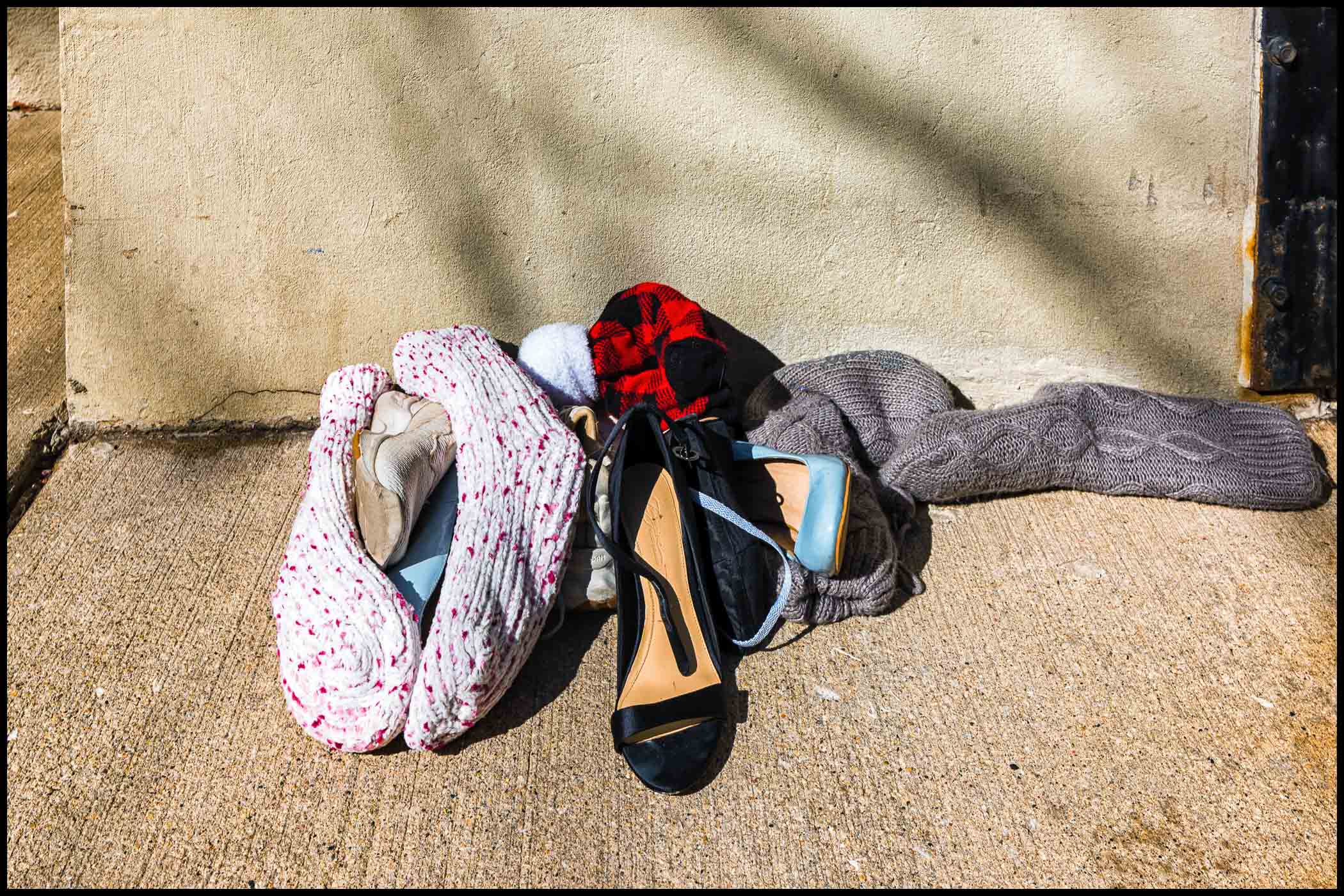
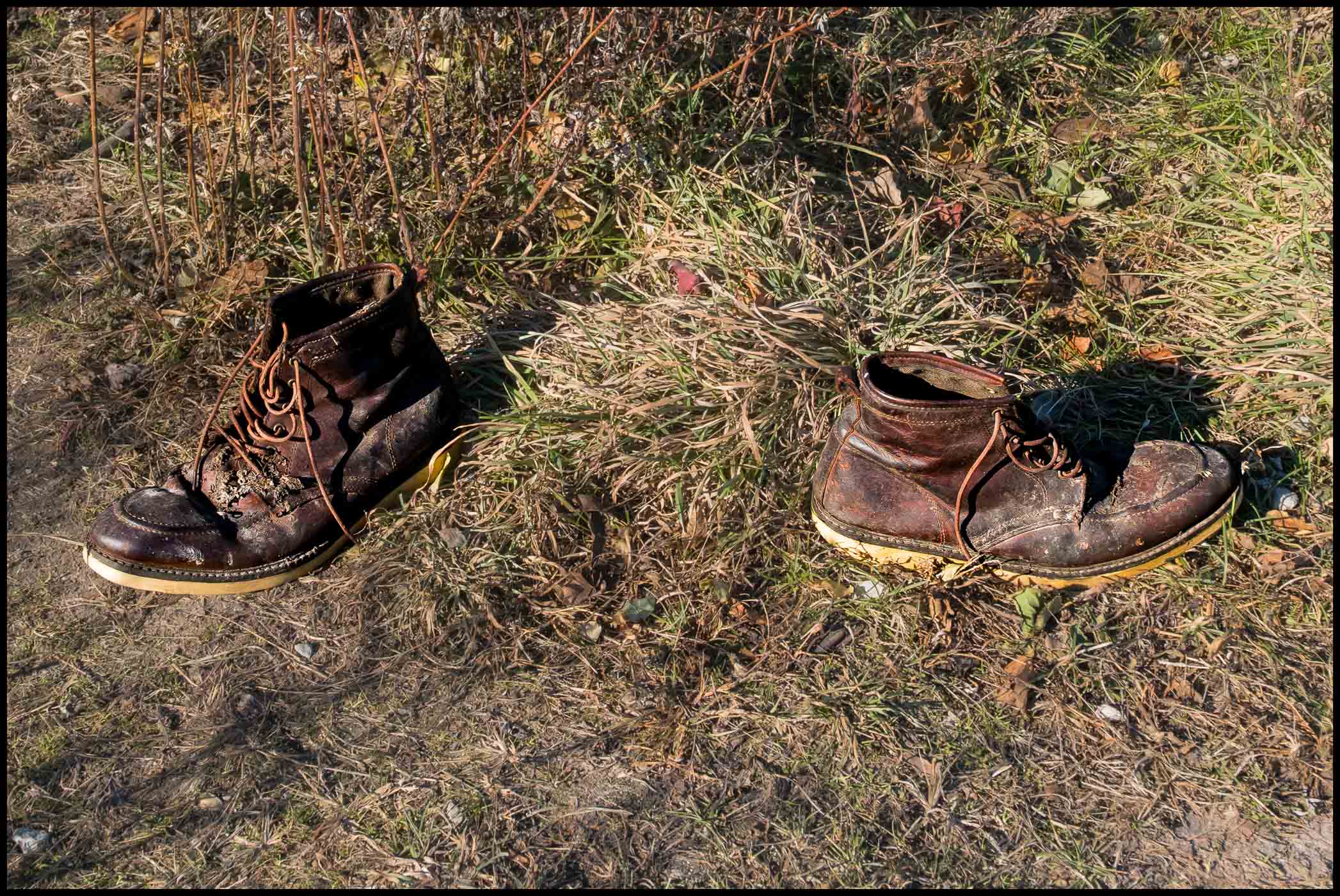
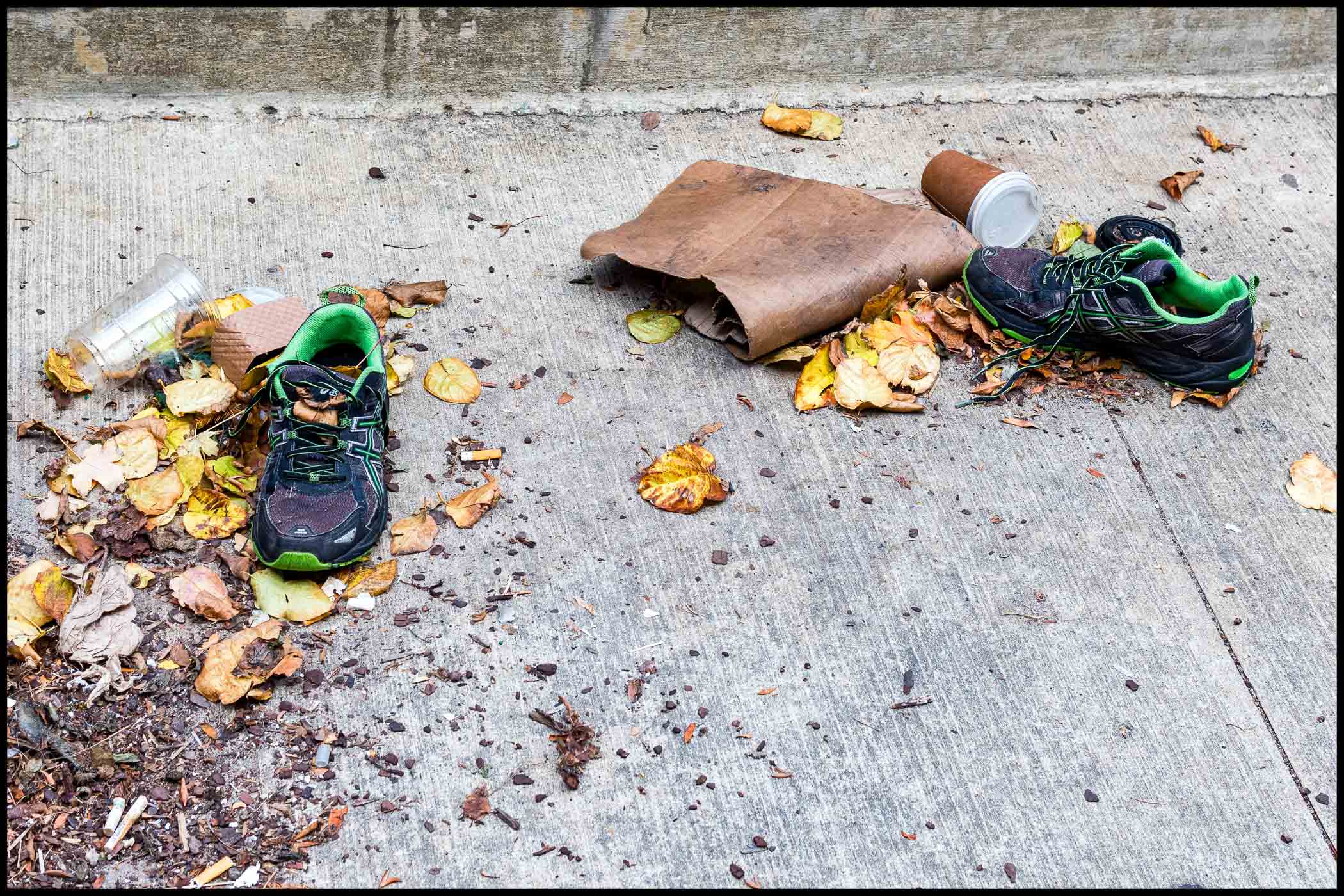
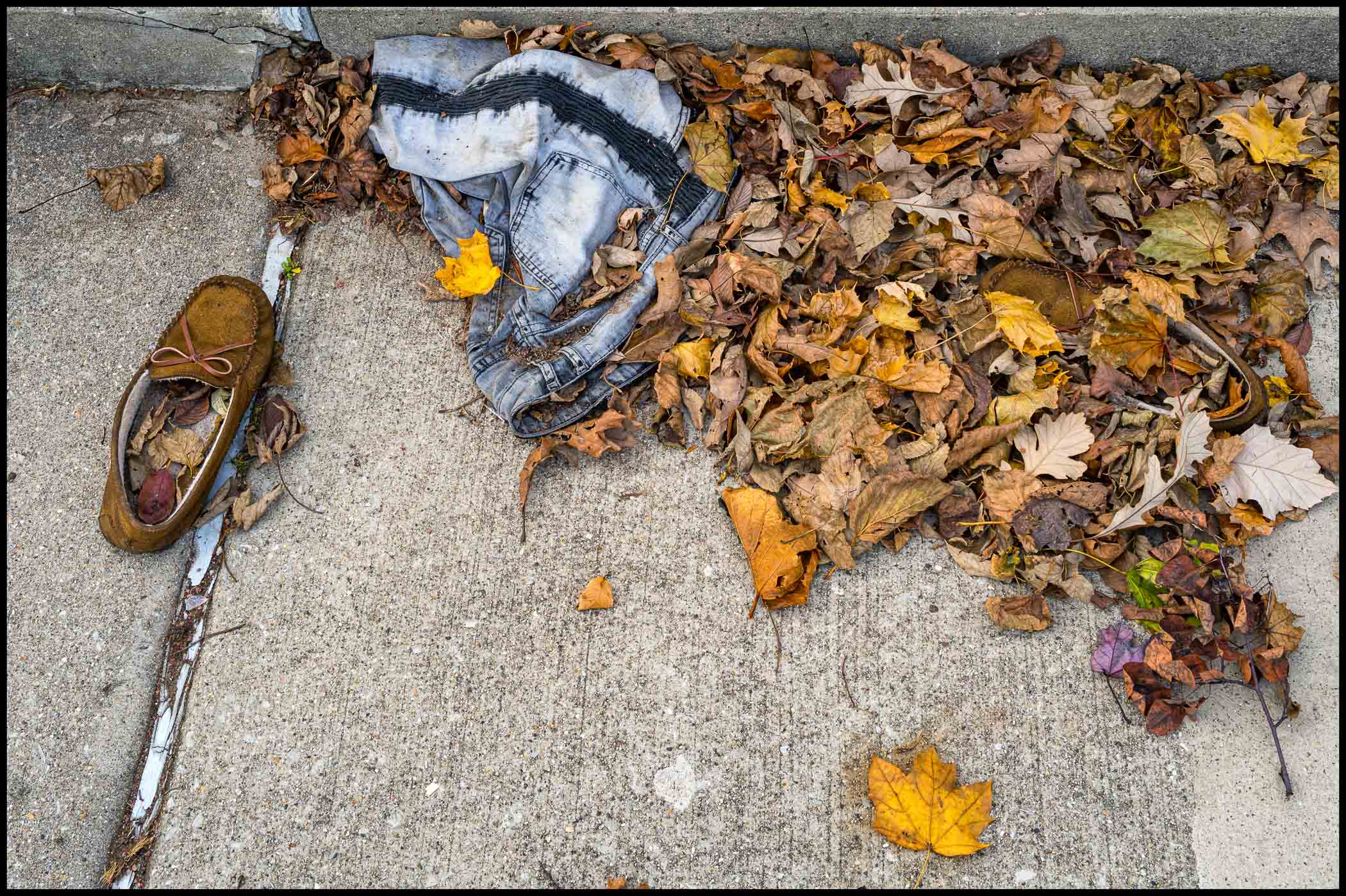
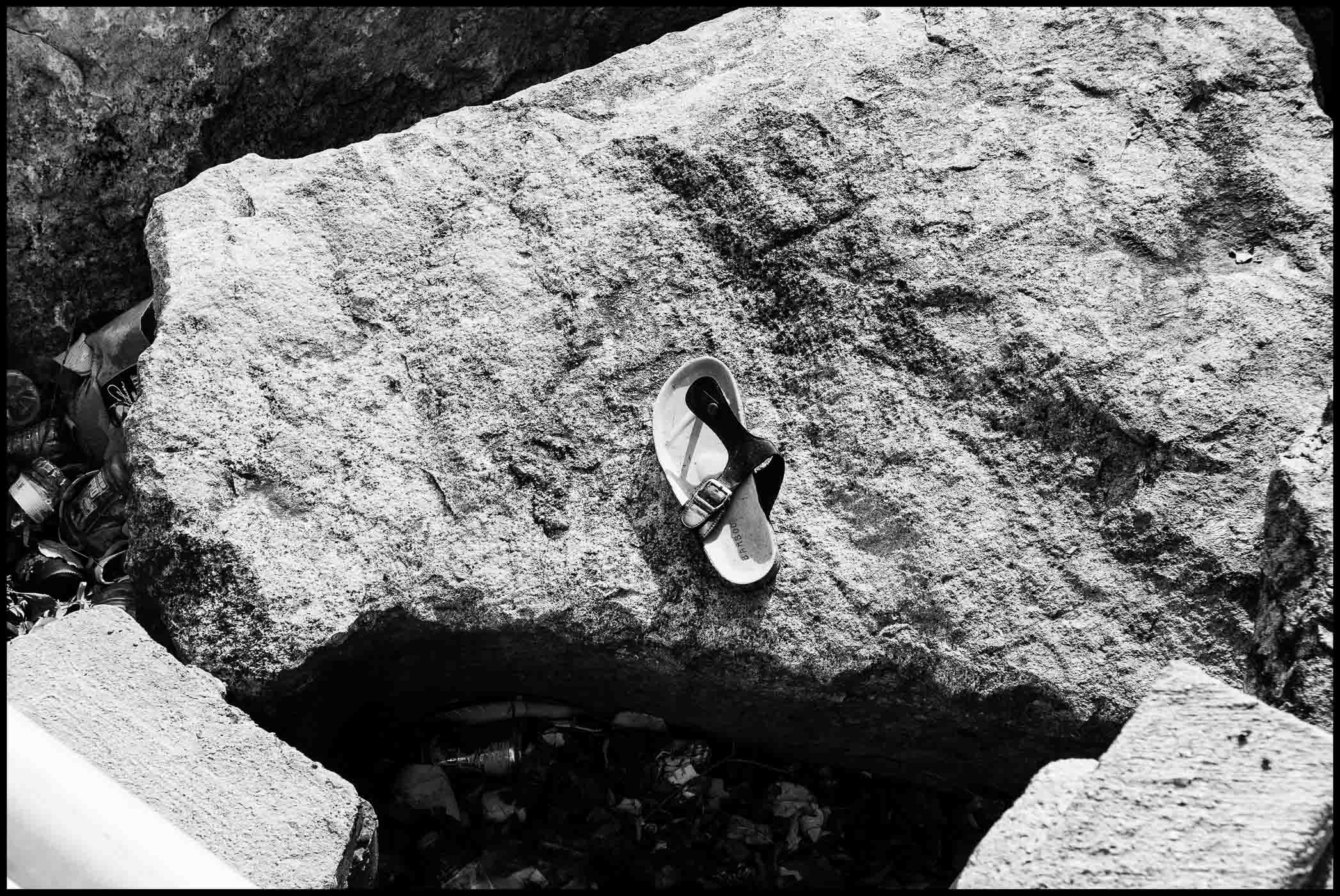
A collection of ladies shoes is next; artfully arranged along with matching leggings, but nobody seemed interested. Anyone for beautiful leather boots abandoned on a path close to the lakefront? On closer inspection, all they needed was a clean and a polish to turn them back into stylish footwear. I’m not sure in which direction the wearer left, though. Possibly, he was just having a moment of indecision.
More trainers on the riverfront path, with a lonesome moccasin not far away. How far can you really hop in one shoe? And finally, the sandal that was down on rocks close to the water’s edge. I can only hope that the owner had deliberately left it there and hopped home safely.
A toy’s story
Toys are another frequently abandoned category. The sad sight of an abandoned toy makes you wonder what the child did when they discovered their precious toy gone? The first is an abandoned puppet that made me wonder what stories it could tell. I often caption images, and this one was captioned “When no one told you the dress code for the party.”
The poor bunny, one hopes, was rescued later when the child realised it had escaped his or her embrace. And finally, there’s the creature counting to 100 in a hide-and-seek game. Why did no one tell them the game was over?
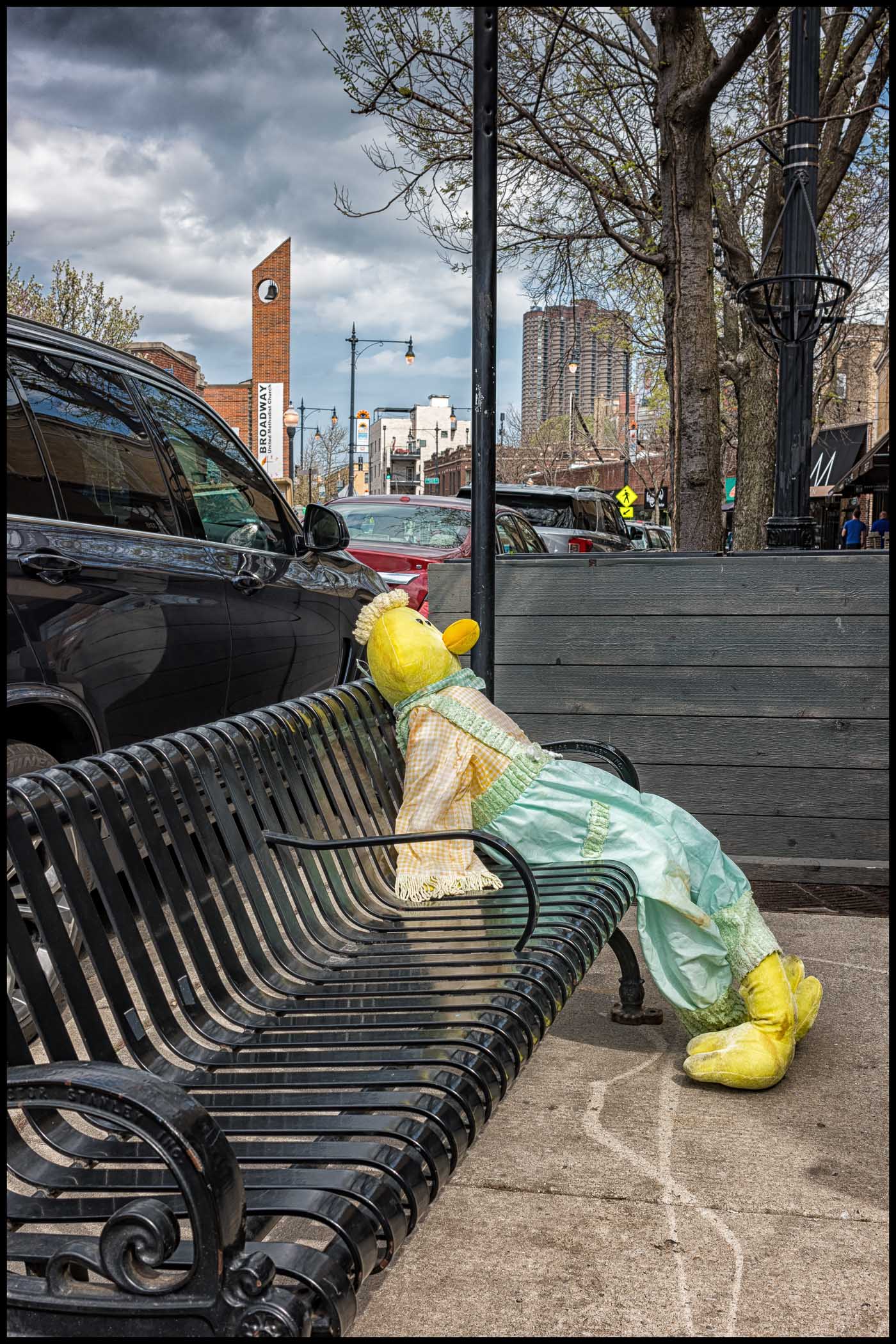
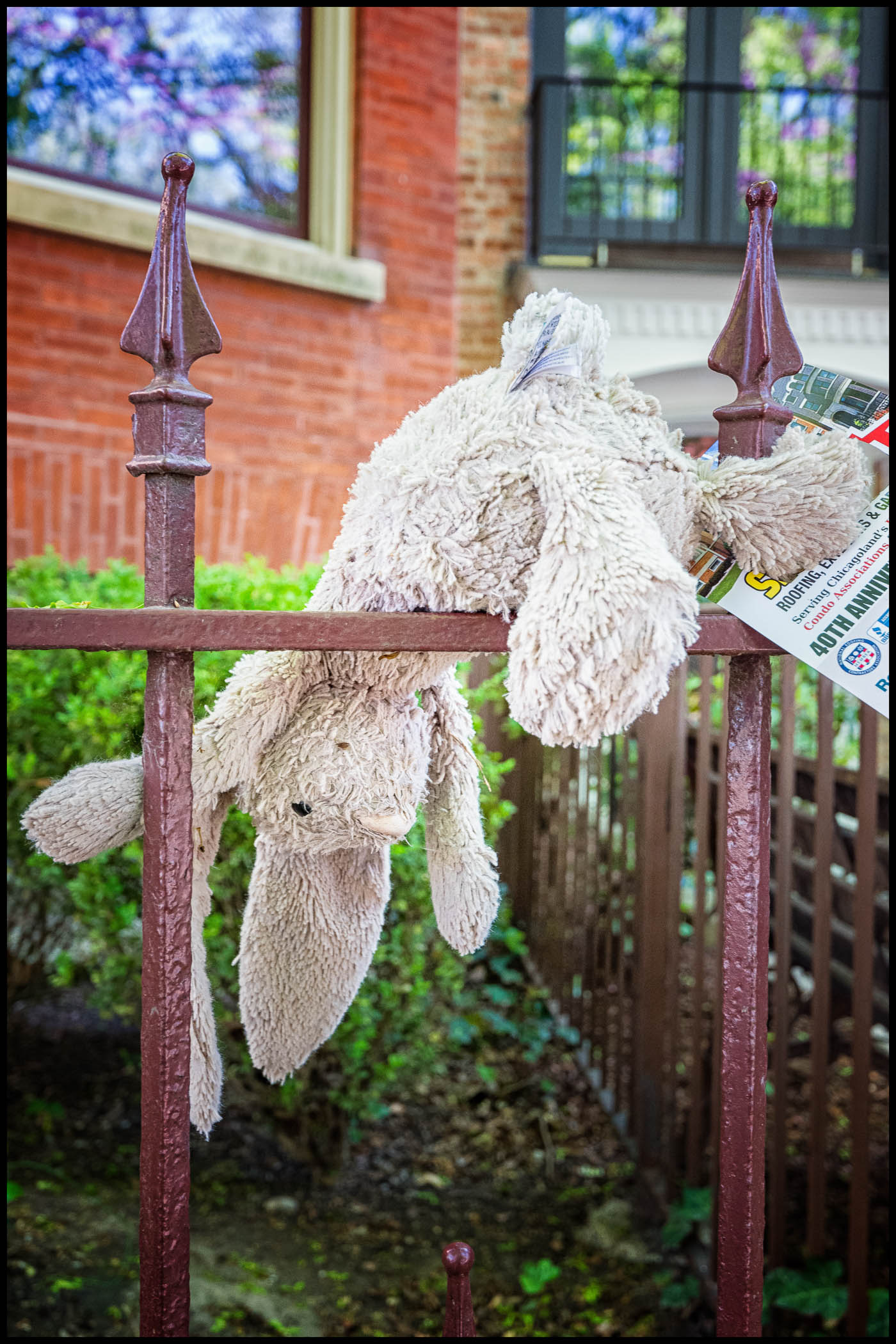
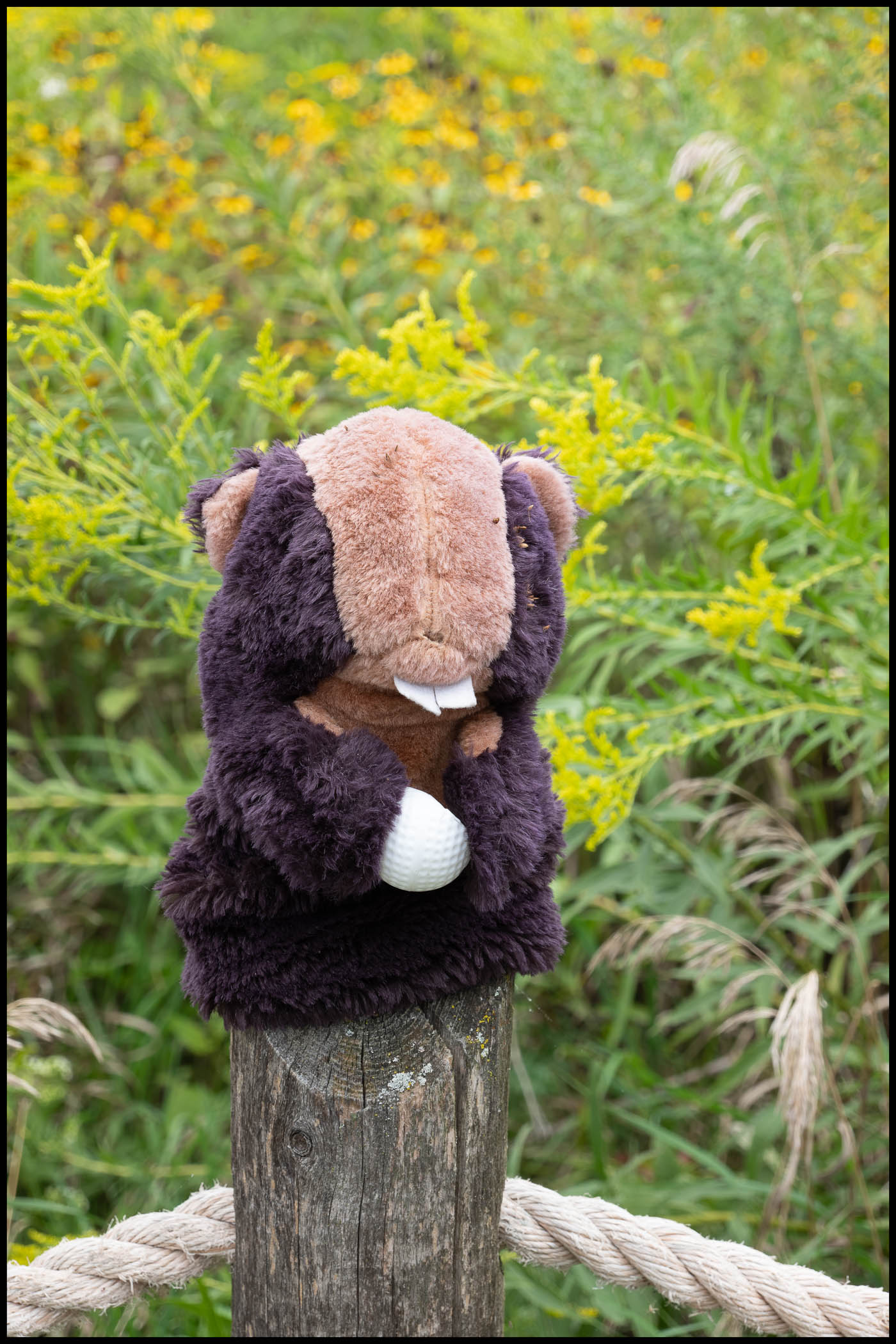
After the heads of state left to go home
This scene reminded me of the Yalta Conference. You can imagine Roosevelt, Churchill, Stalin, and an unnamed fourth person sitting there having their photograph taken before heading inside for strong libations and the odd cigar. Back to real life, when was the last time these chairs were sat in? Why did no one bring them back in before the Midwest winter arrived?
Curiosity among the ruins
Ruins and decaying structures can often be beautiful. I love trips back “home” to the UK, and I’m always curious about the history of what you see. Visit London, Rome, any Greek island, or almost any medieval church and you can easily spot it.
Decay is a natural process. It can reveal stories or the lives of people who lived there. Castles or churches and even the humblest of structures frequently have marks or graffiti left by individuals carved in wood and stone.
But it also exists in modern cities, and out in the countryside where structures no longer serve their intended purpose. Chicago, it should be noted, has two seasons: winter, and construction according to the wags. It can be communities that were abandoned in the past and have been allowed to naturally and slowly return to nature. Or just the relentless pace of “progress” with no time for sentimentality. Sadly, Chicago has bulldozed priceless architectural history in the past, all in the name of modernization.
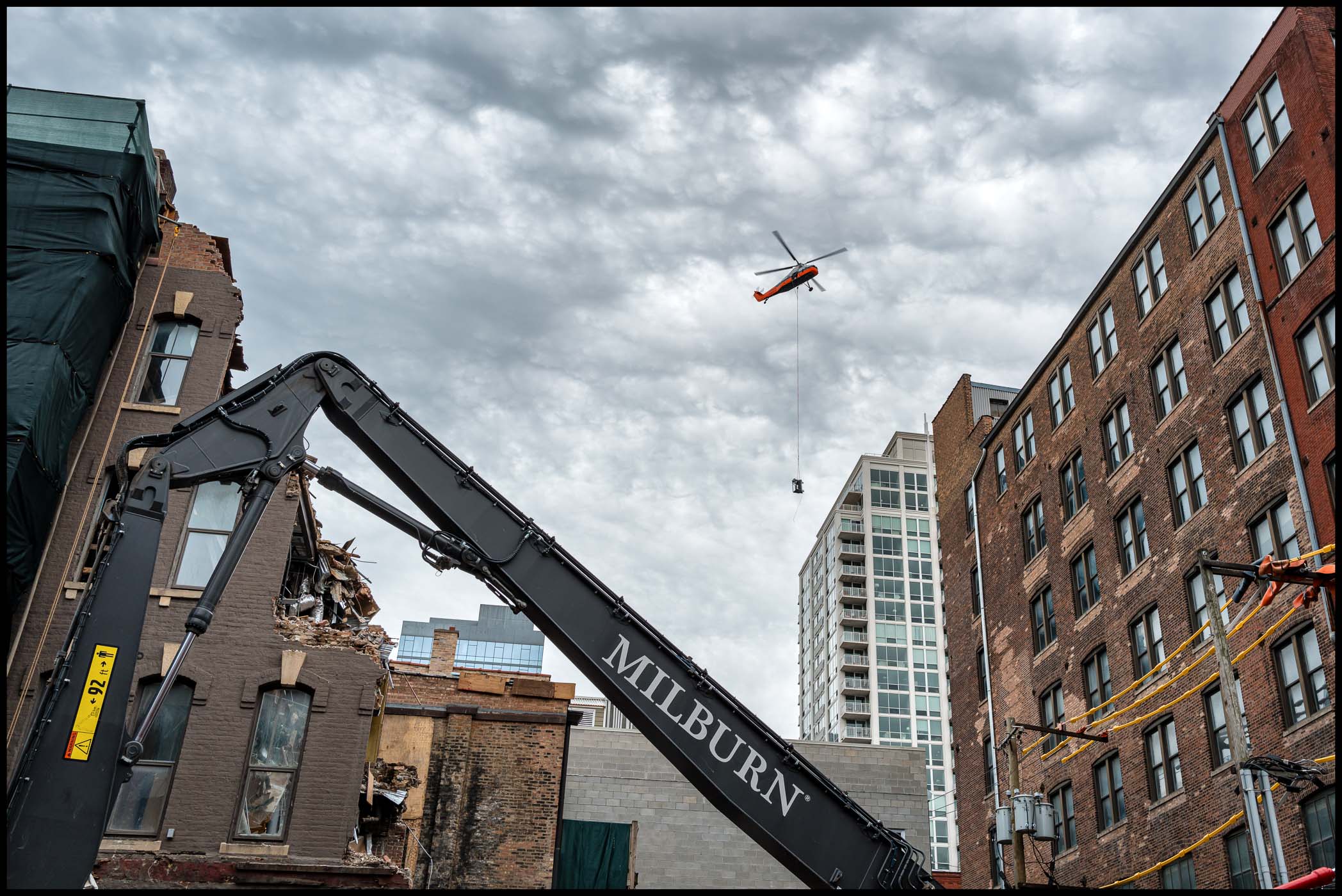
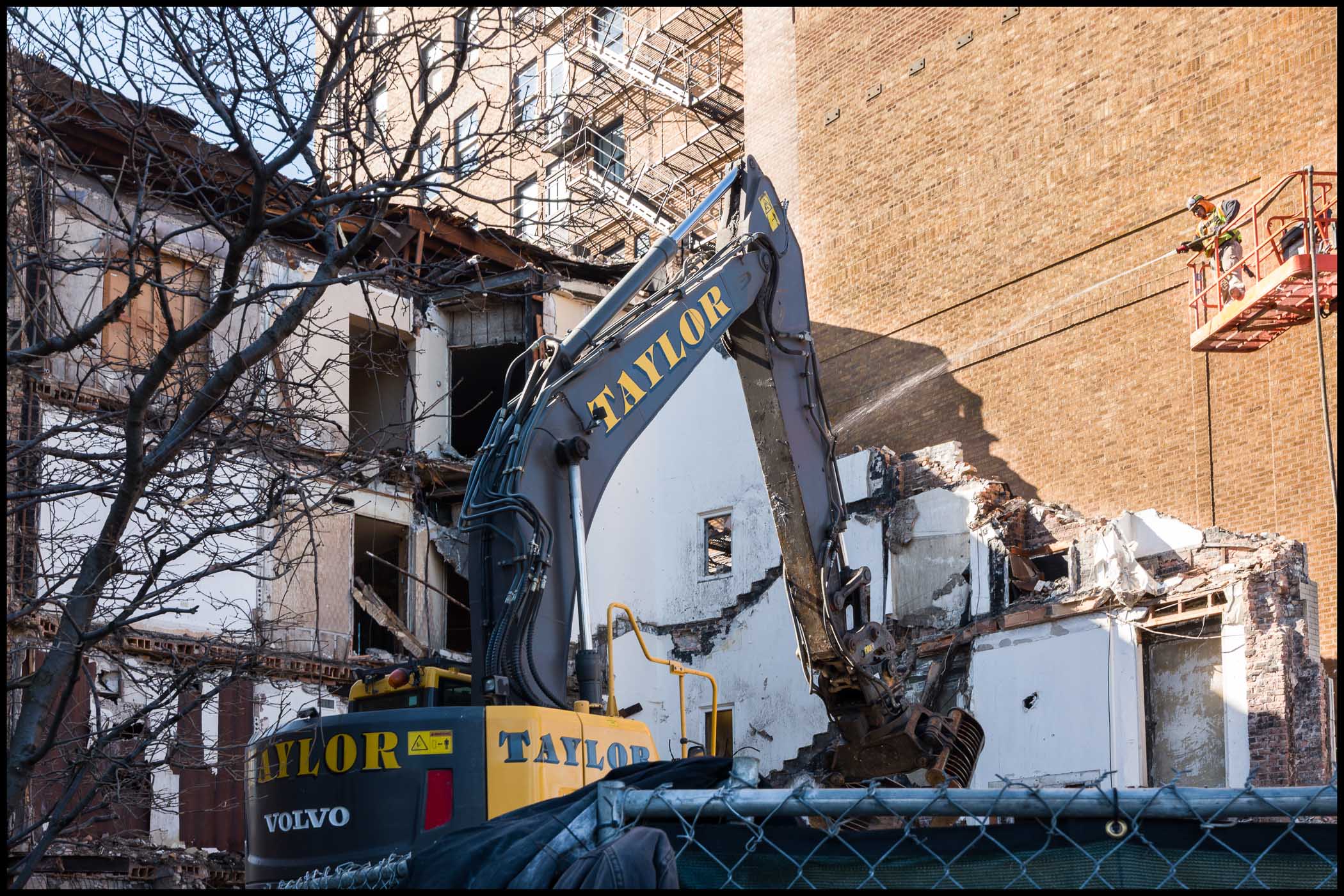
When the lake gives back its treasures
These were all objects found after a storm on Lake Michigan. The storm had brought up bicycles thrown some time ago into the lake. Evidently, the lake decided it would rather not keep them. Who owned them, and why did they end up here? The baseball cap equally could have blown away at any time but had come to rest close to the shoreline after the storm.
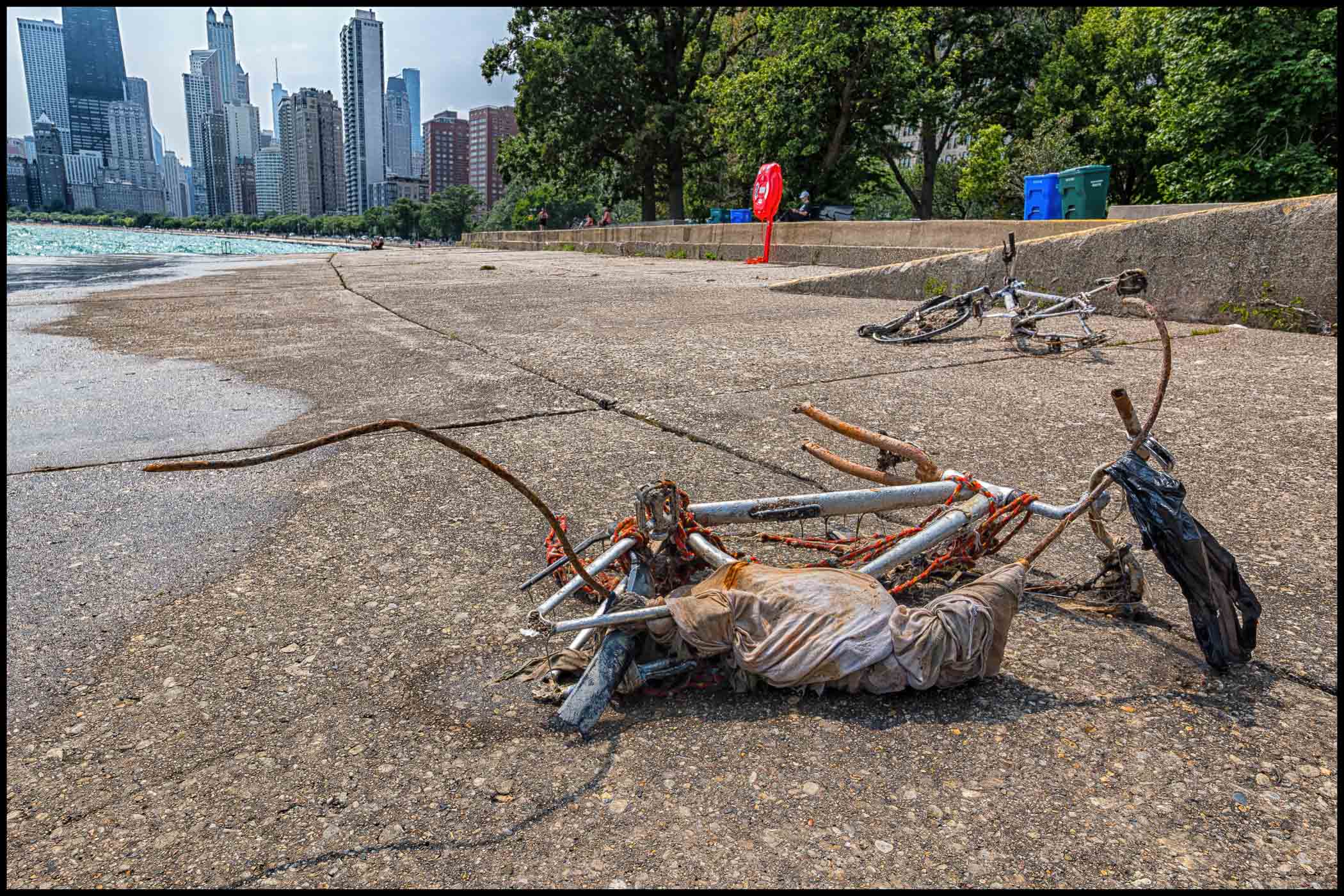
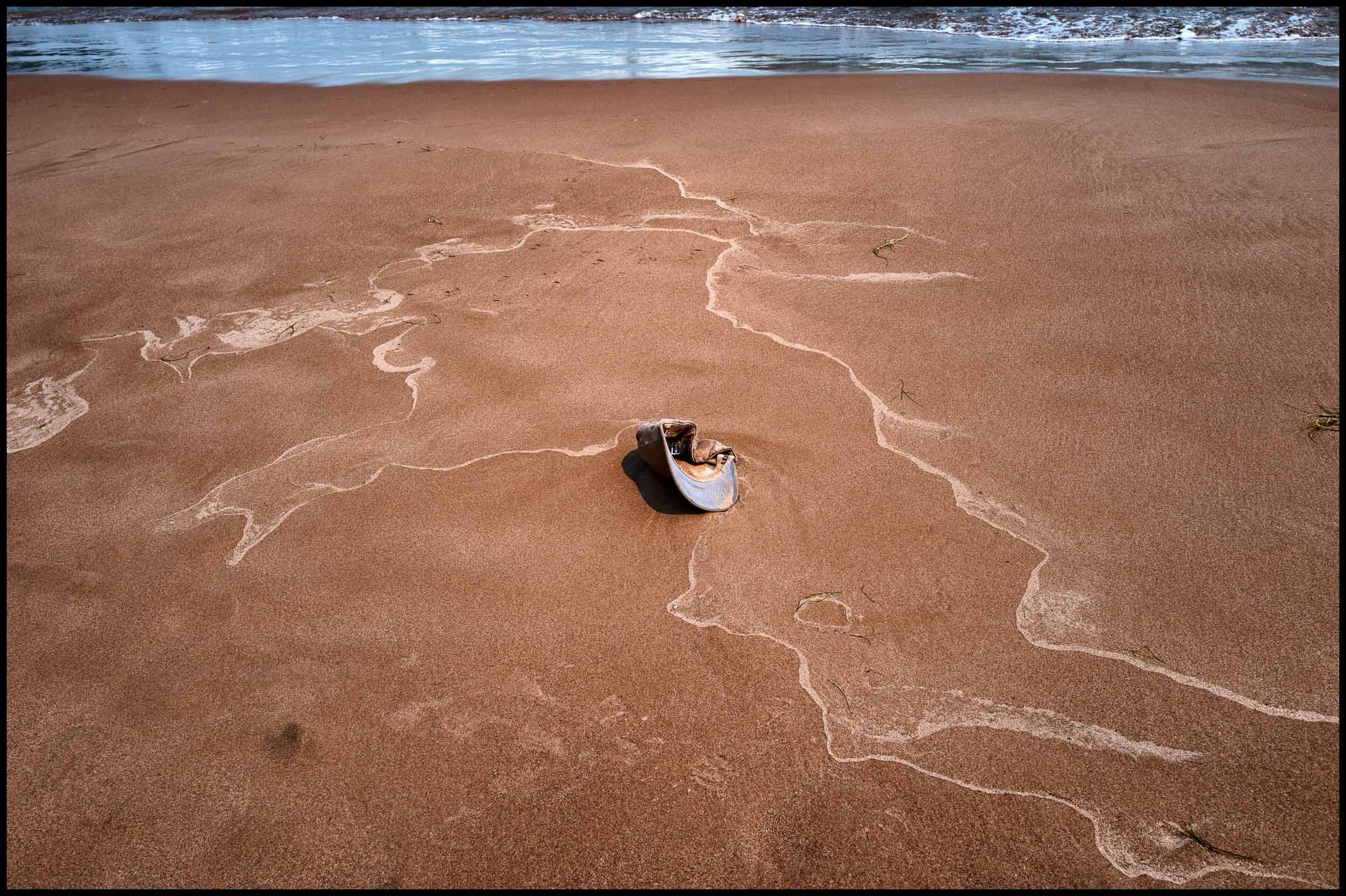
Conclusions
No walk need be fruitless. The unexpected can often turn up when you least expect it. And I’m not referring to dear old Uncle George. It’s really a matter of keeping your eyes open and looking around you. Think of it like a grown-up version of I-Spy that you played as a child. It’s remarkable what you can see that’s just waiting to be discovered. It’s an exercise you can play any day. And it’s why I always take some camera or other with me.
Kit corner:
I’m out and about with a camera most days of the week. It can be anything from my wheezy old D-Lux 109 to a CL with whatever lens falls to hand, or a Q3 28, to my shiny new Q3 43. Close-focusing with a macro setting can help capture details. And I have learned to appreciate the value of the flip-out screen on the Q3. A lower position can give you a more interesting perspective without wrecking knees.
Make a donation to help with our running costs
Did you know that Macfilos is run by five photography enthusiasts based in the UK, USA and Europe? We cover all the substantial costs of running the site, and we do not carry advertising because it spoils readers’ enjoyment. Every amount, however small, will be appreciated, and we will write to acknowledge your generosity.

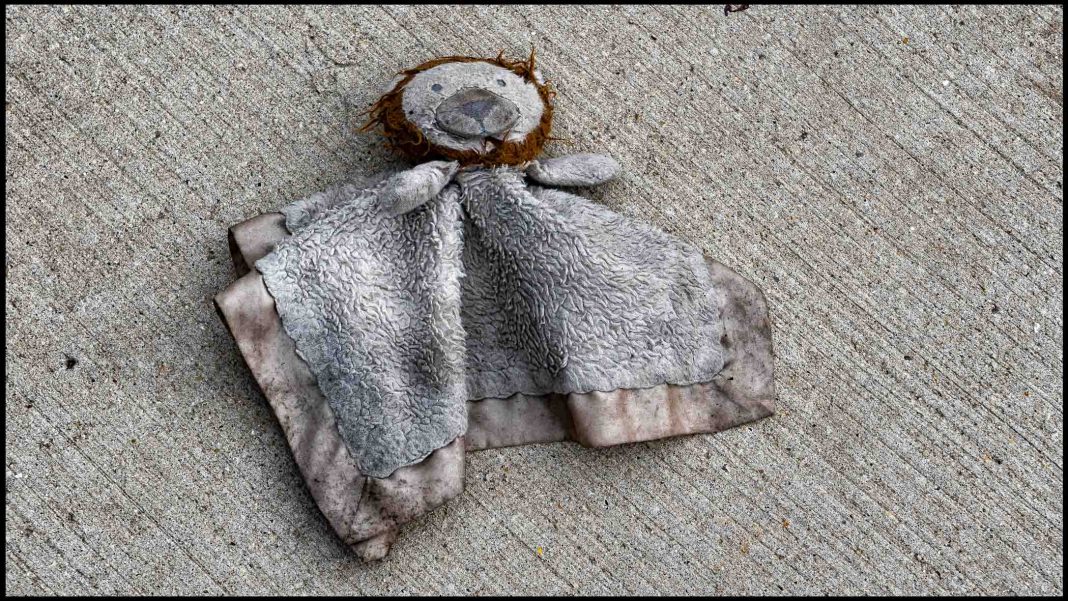
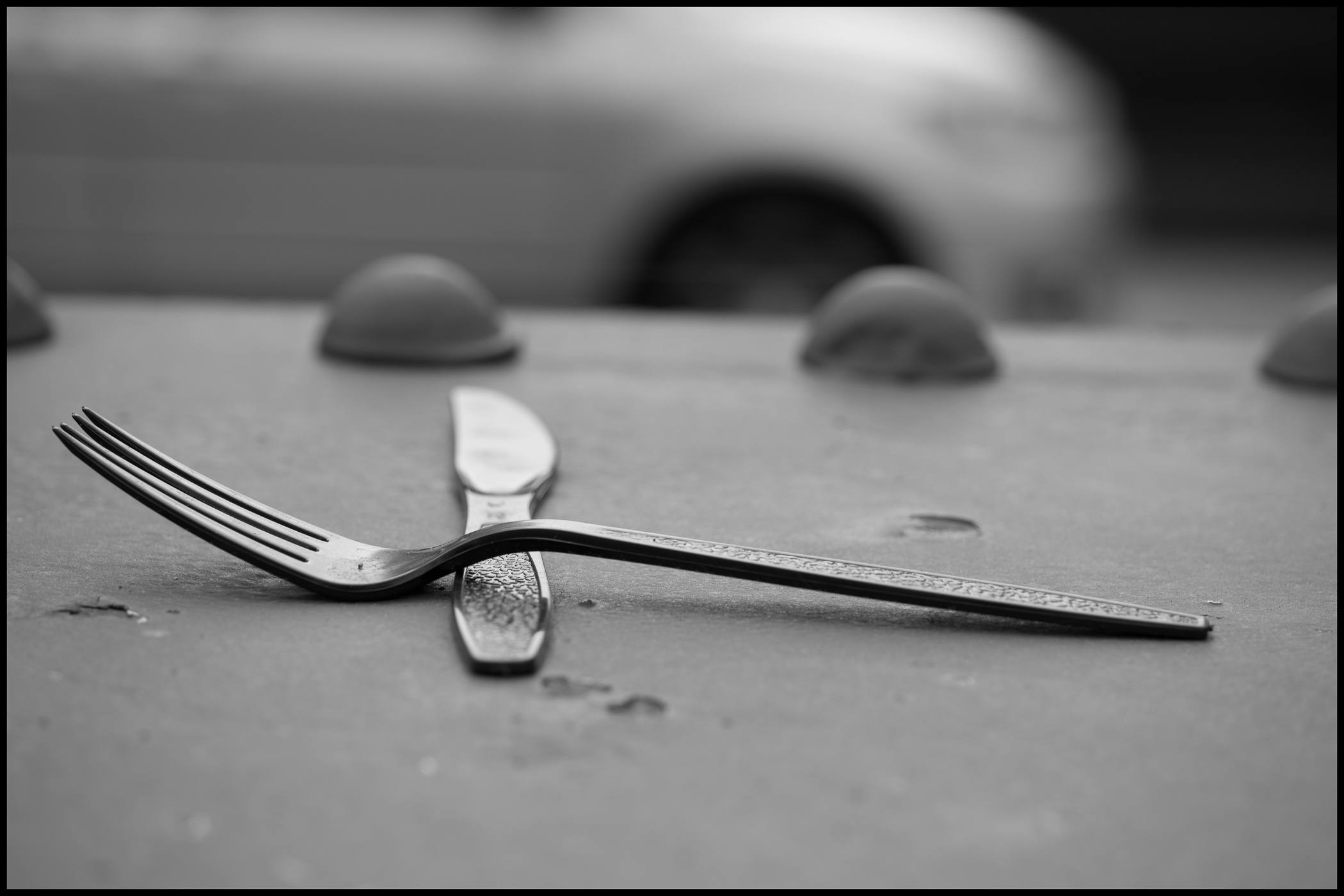
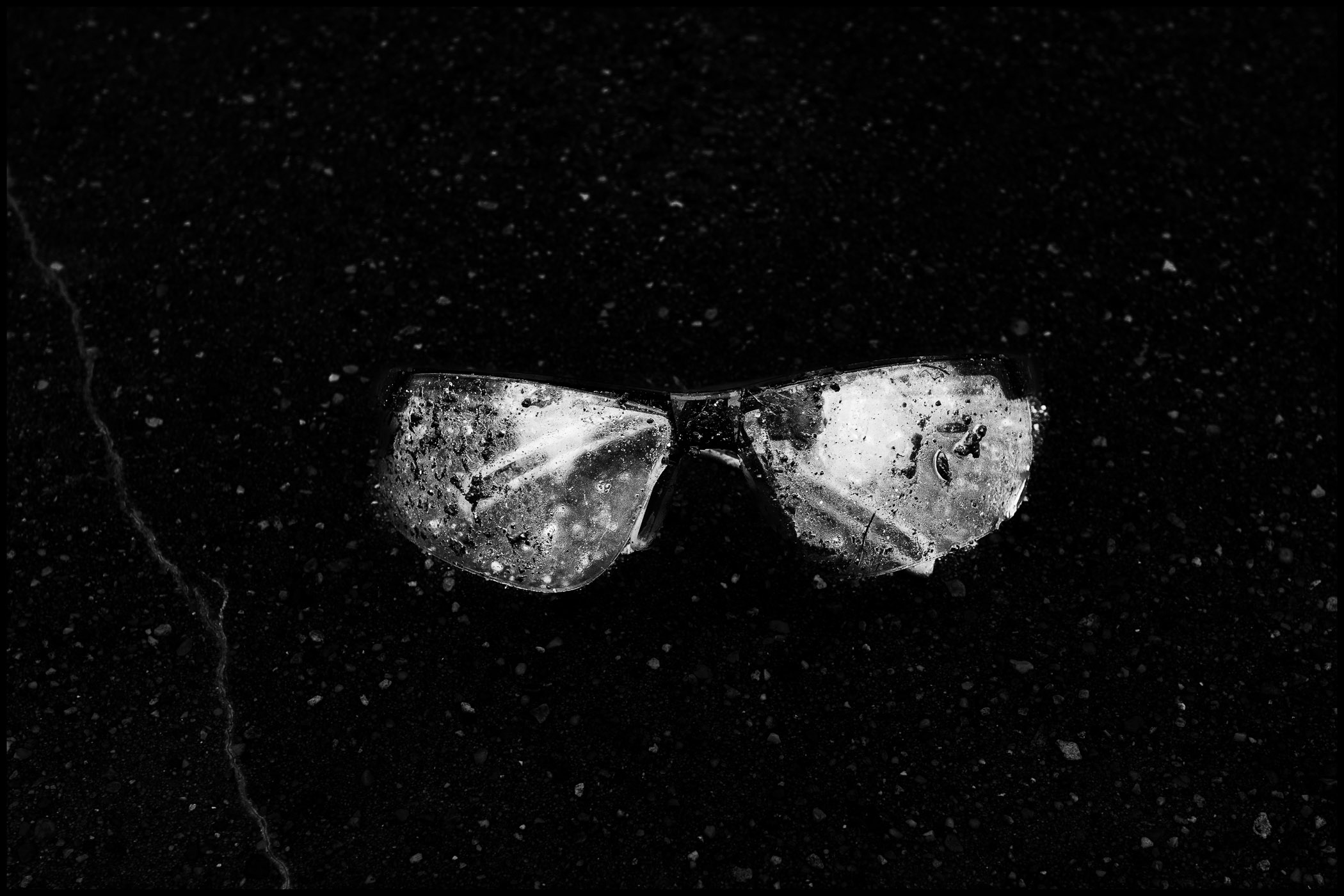
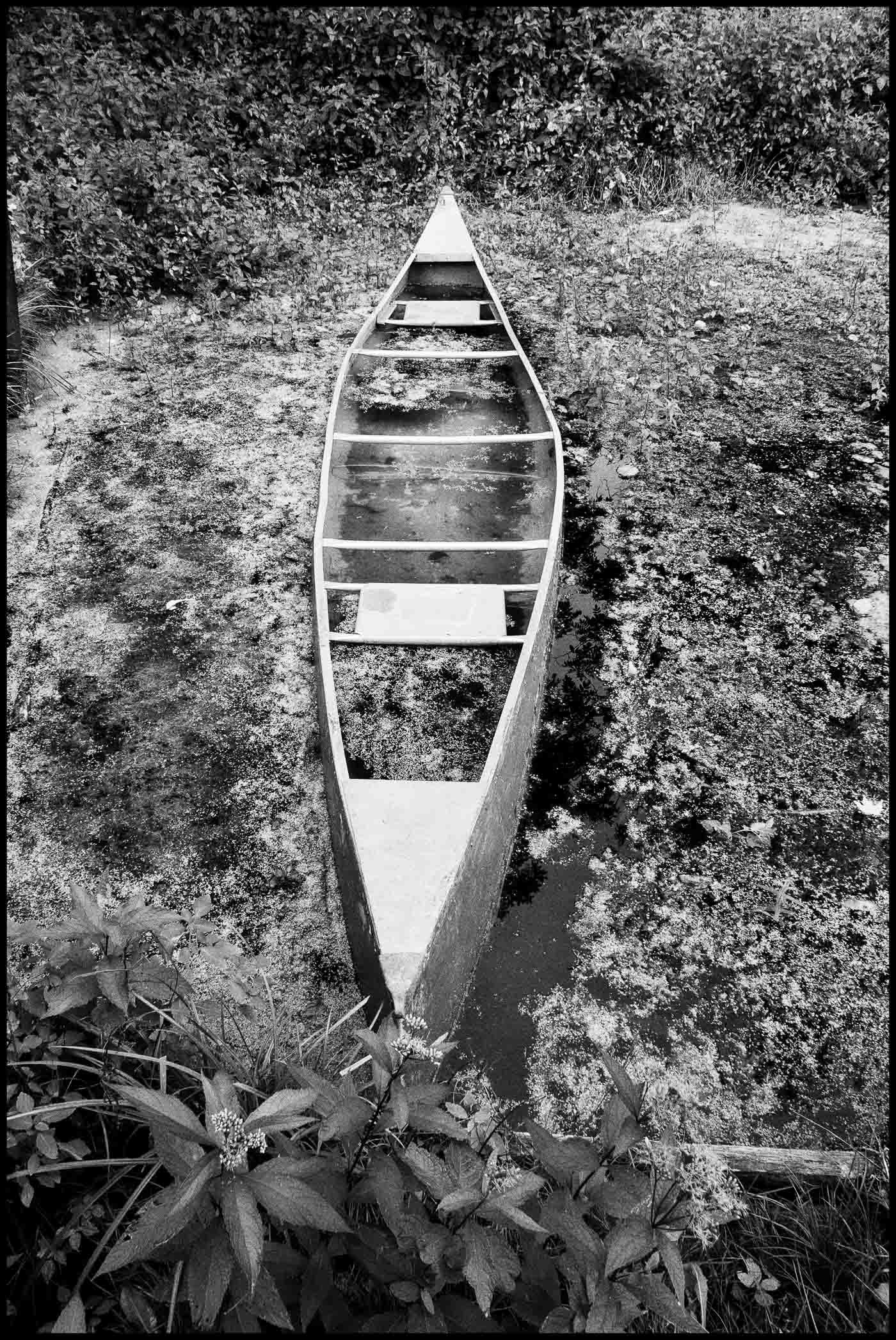
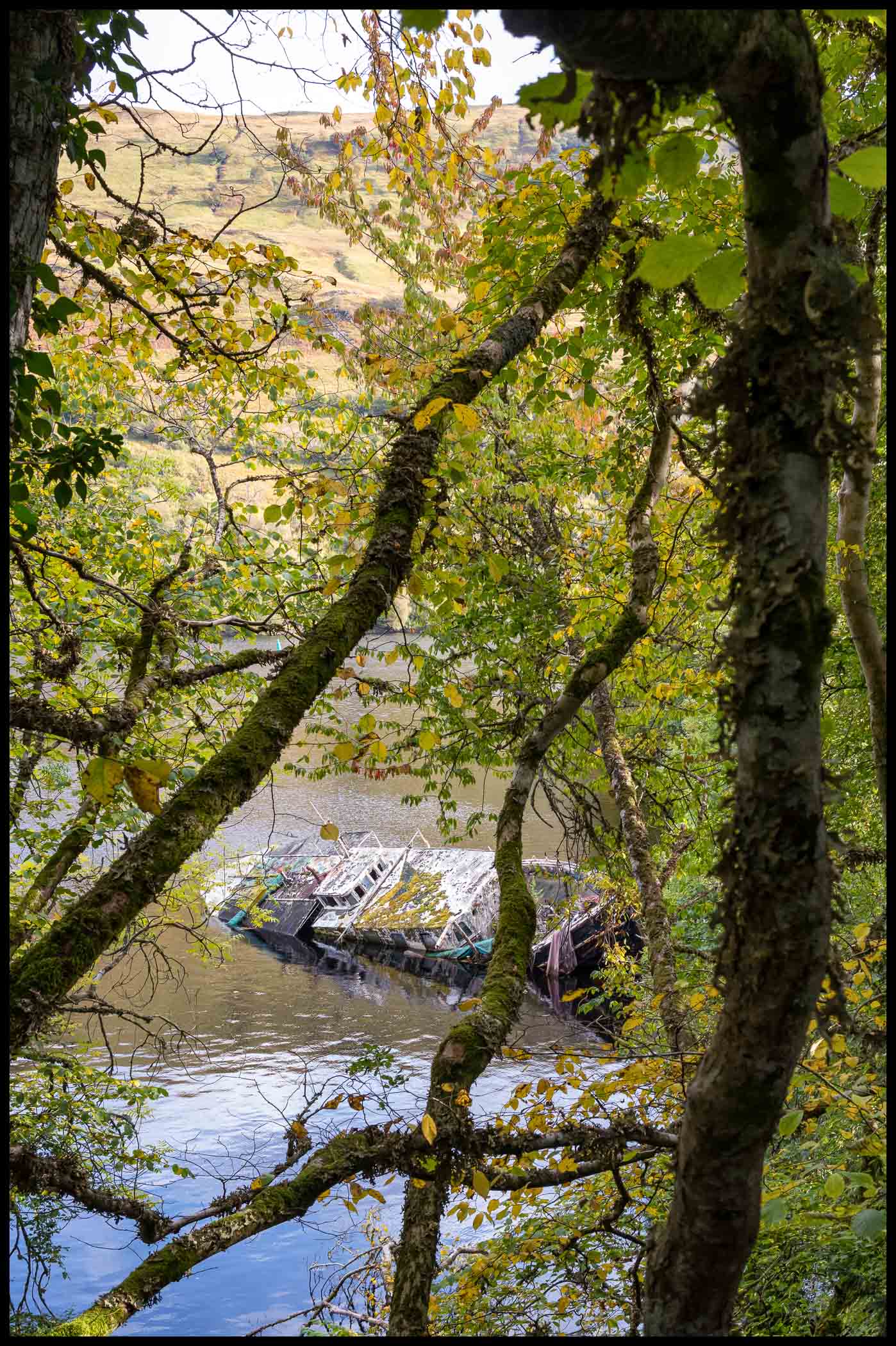
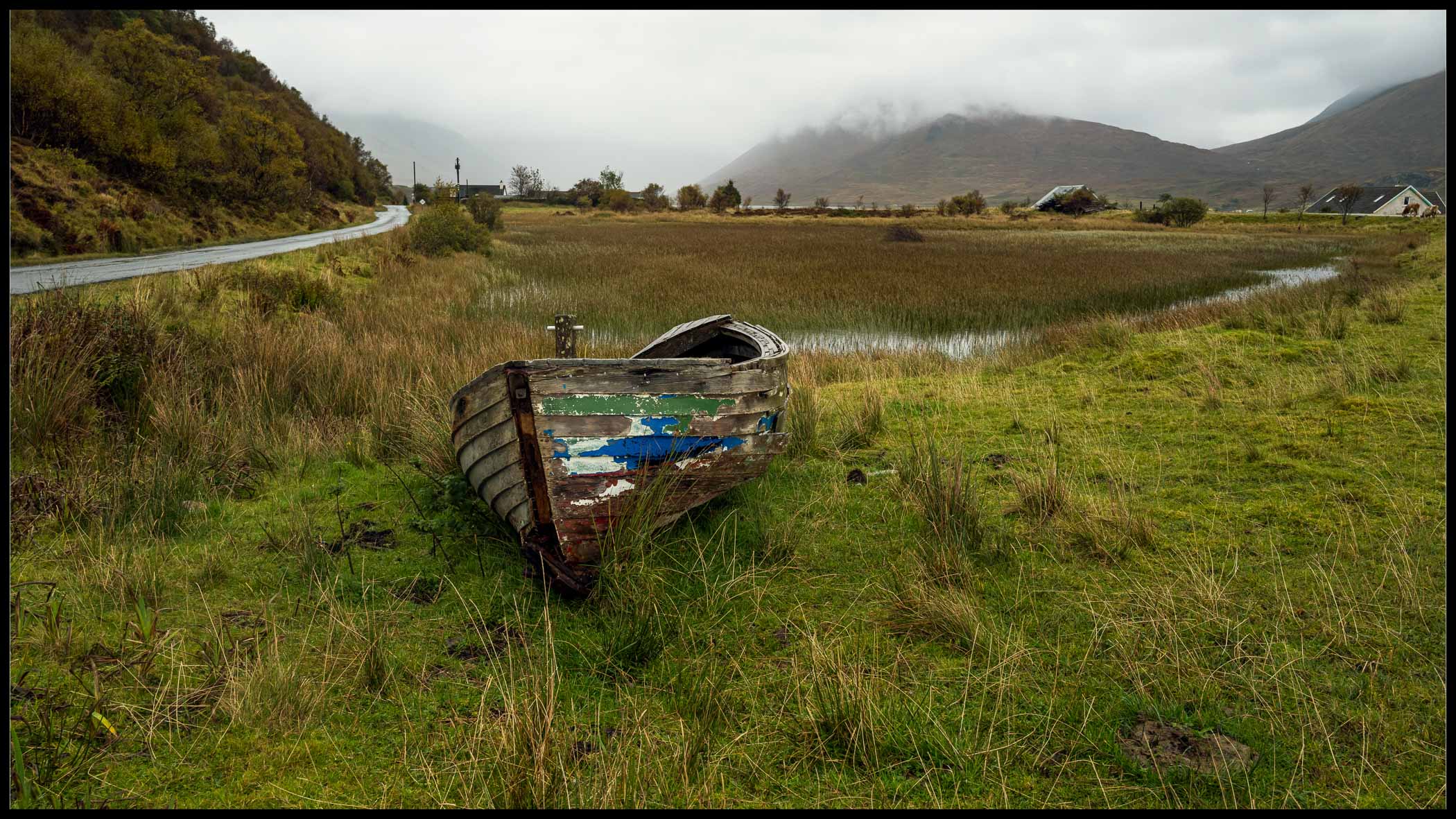
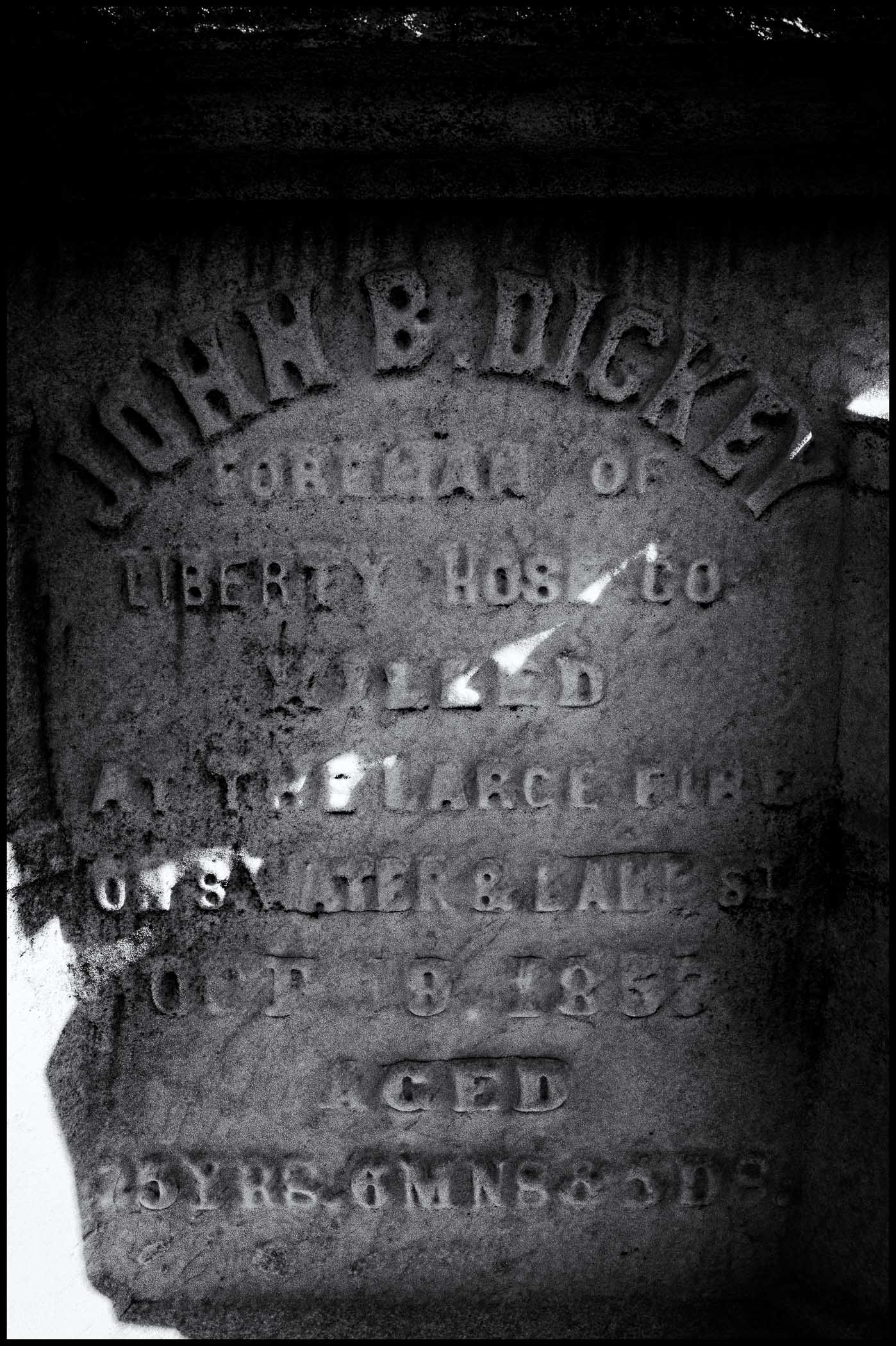
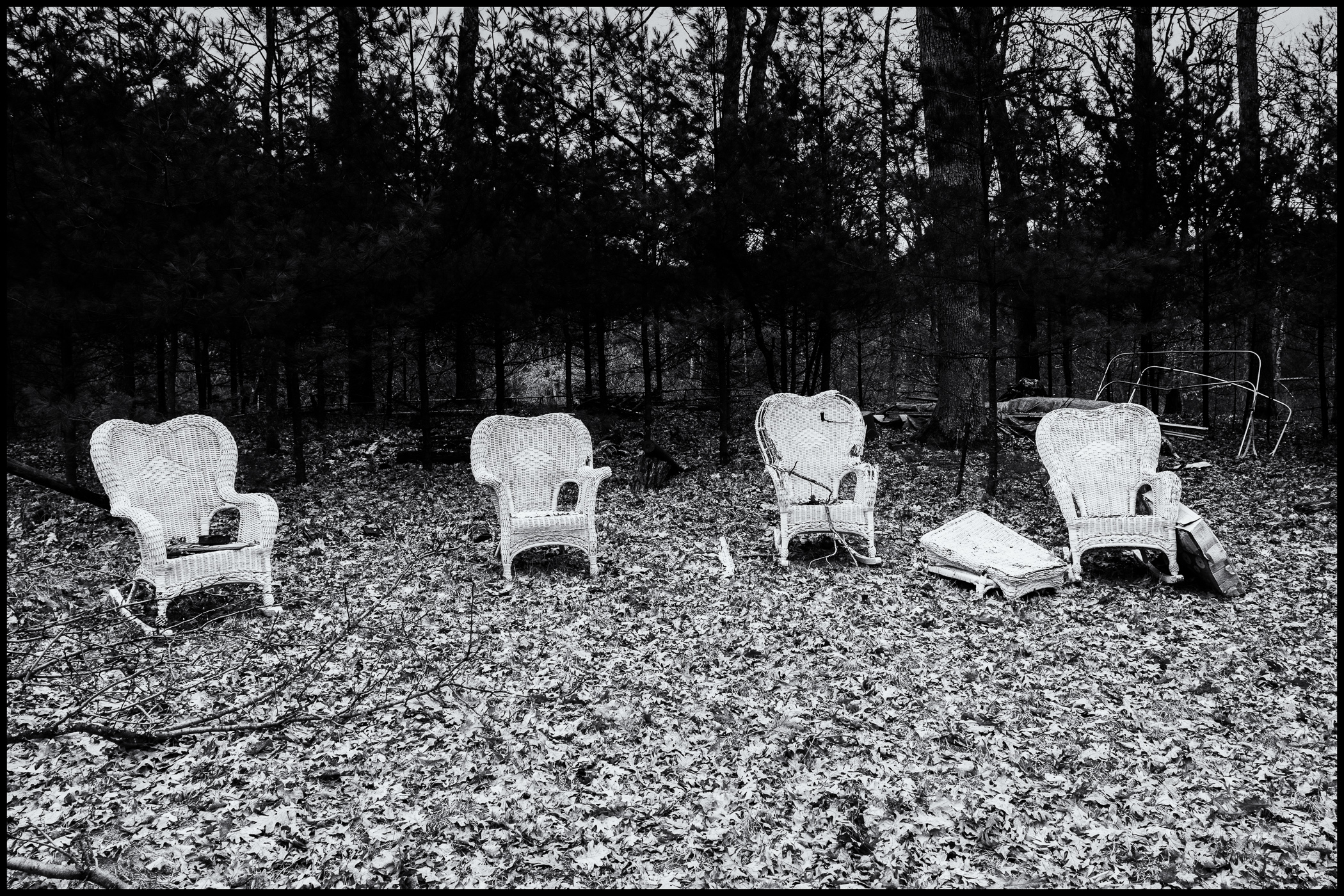
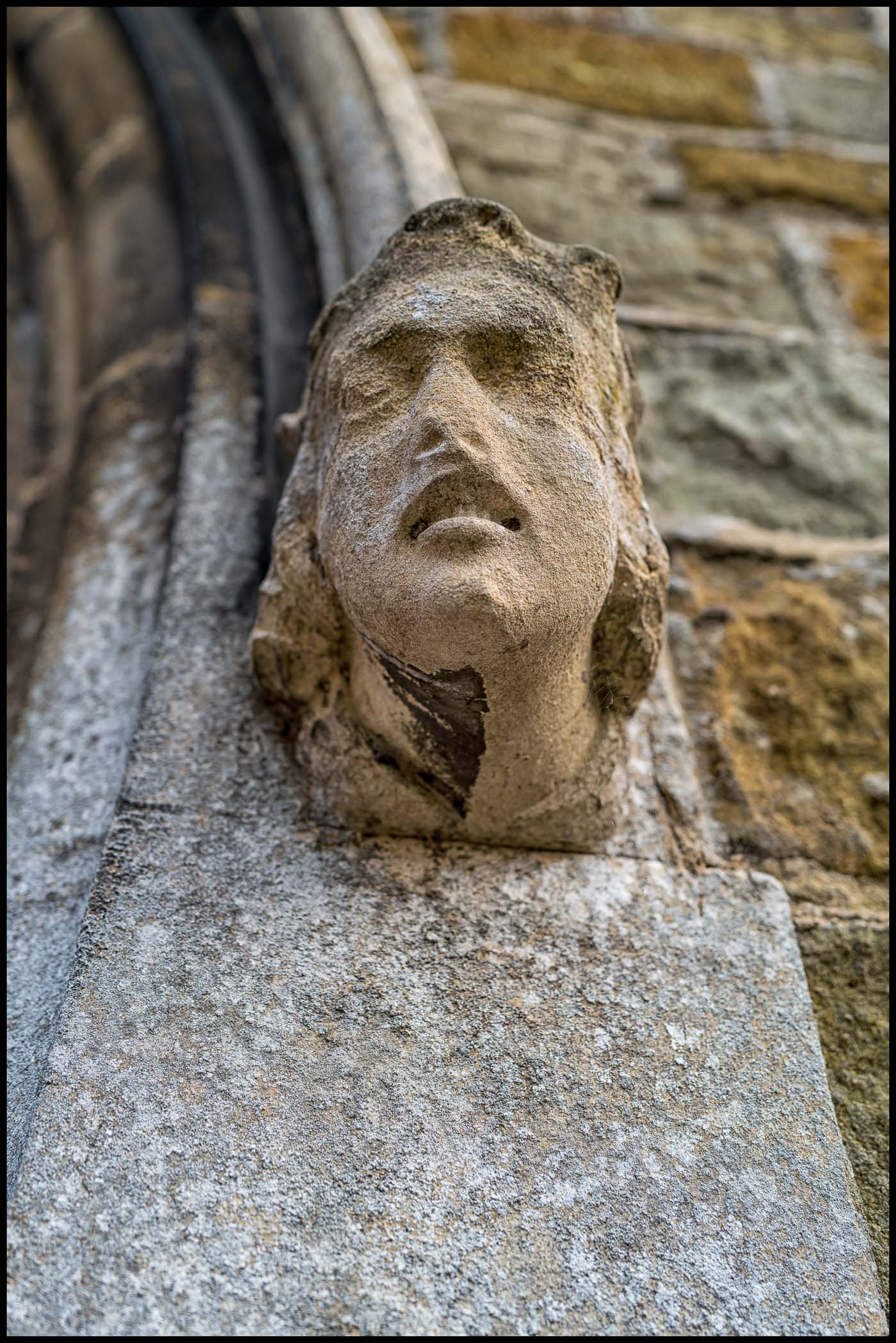
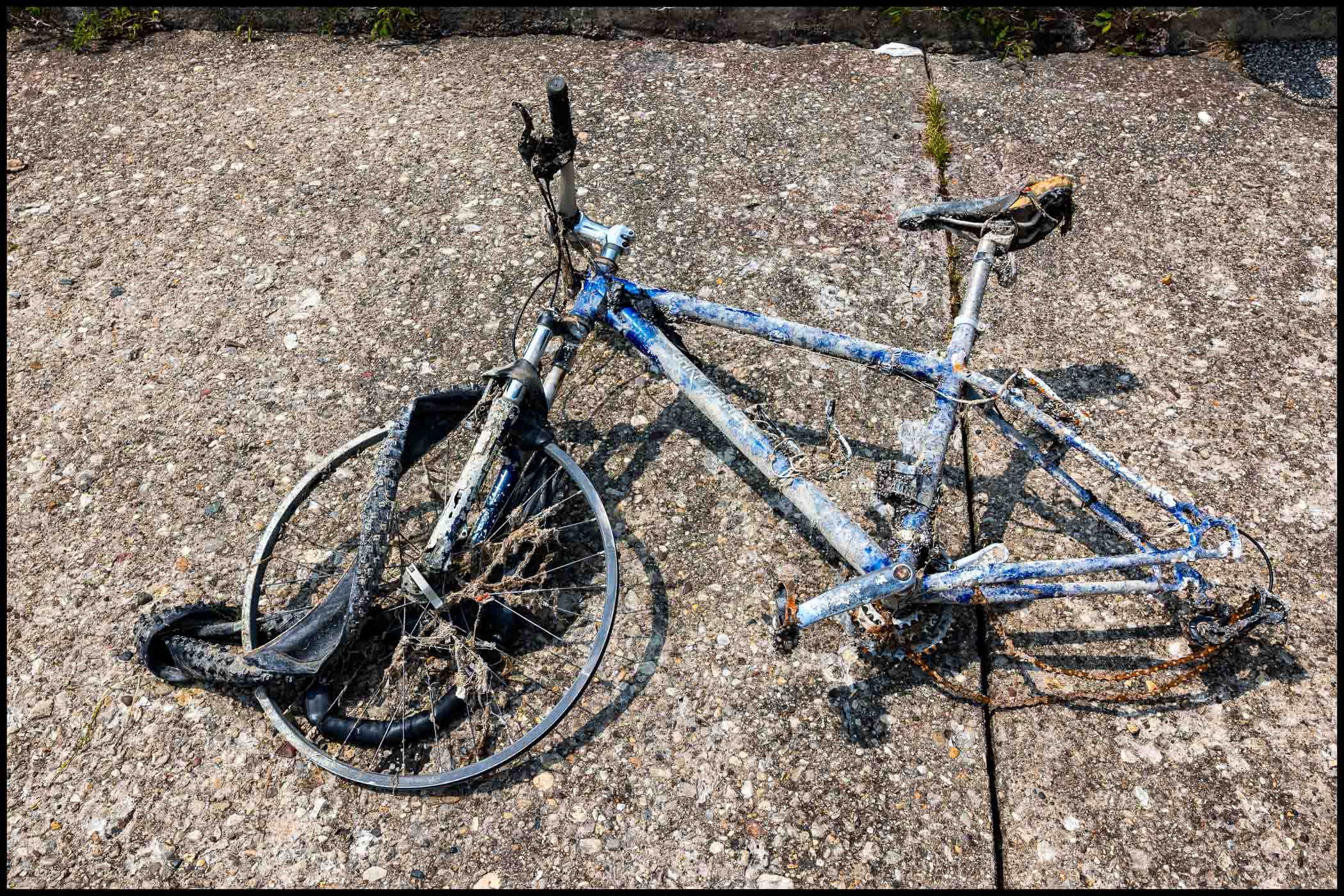
Hi Jon, an inspiring article with fascinating images.
Hi Jon,
Great images and creative perspective. I love the context you provide. They are like environmental portraits. Thanks for an interesting read and wonderful photos.